A city where mountains meet oceans, history shapes the streets, and every turn feels like a new discovery.
I first set foot in Cape Town with a mix of excitement and scepticism. Travellers raved about it, calling it one of the most stunning cities in the world, but I’ve learned that postcard images don’t always match reality.
What I found wasn’t just beauty — it was a place that felt alive, where history, nature, and culture weren’t separate attractions but part of daily life.
Crowned by a mountain and stretching seamlessly from sea to sky, Cape Town is a city that doesn’t just sit within its landscape — it’s shaped by it. Table Mountain commands attention, its flat top draped in cloud, while the city spills toward two different oceans, each coastline offering a distinct experience.
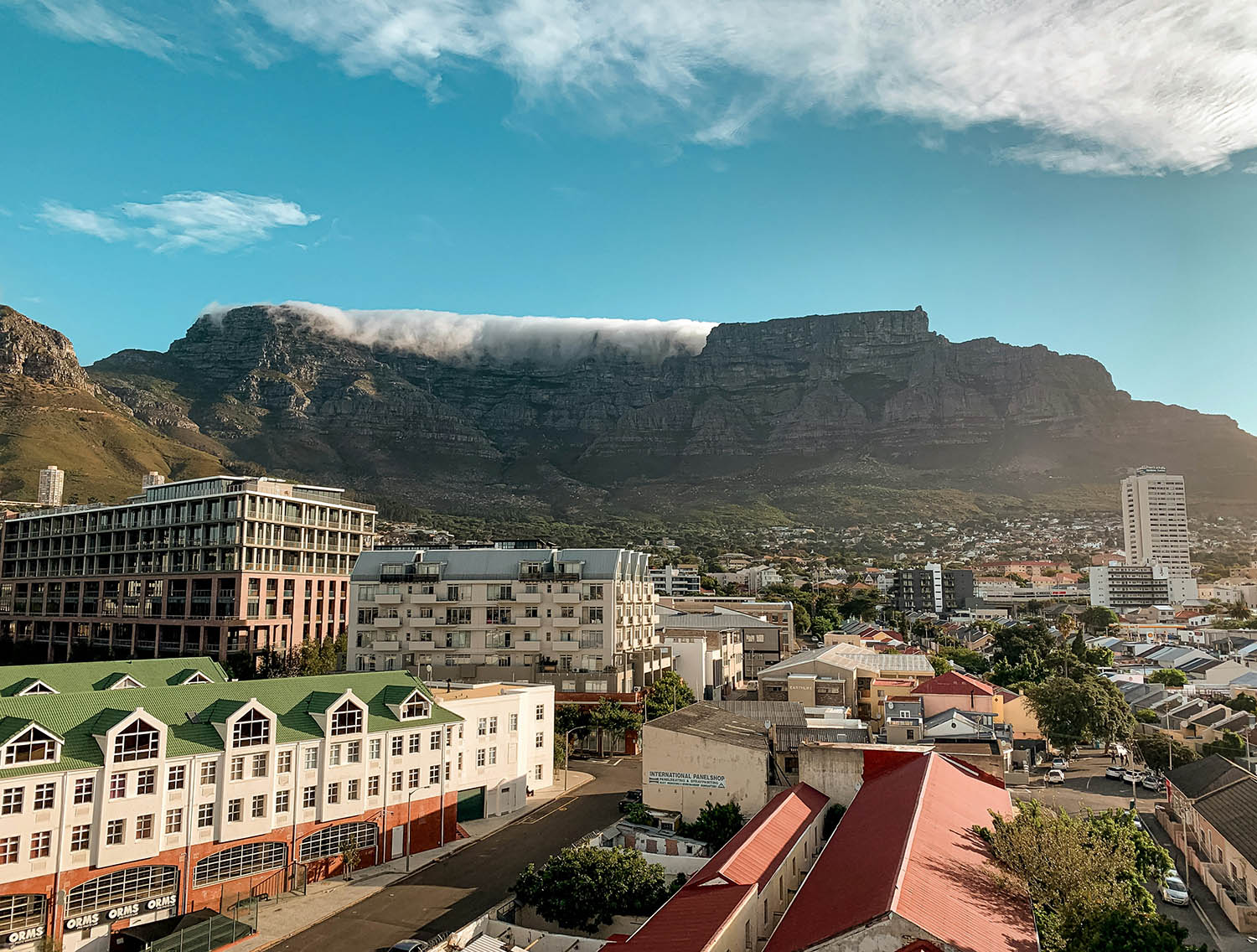
But Cape Town is more than its geography. It’s a convergence of cultures, where Hindus, Muslims, and Jews have coexisted for generations, where flavours from Africa, Europe, and Asia collide in the kitchens, and where art and creativity flourish against a backdrop of resilience.
It’s not a perfect city — no place is. There are complexities, contradictions, challenges and dangers, and I’ll touch on those, too.
But if you’re wondering whether Cape Town is worth visiting, I can tell you this: I went once and have been drawn to go back ever since. Here’s why.
Disclosure: This article contains affiliate links. If you make a purchase through these links, I may earn a small commission at no extra cost to you. Thank you for supporting my blog!
Why Cape Town Captivates Travellers
Cape Town is a city that imprints itself on you. It doesn’t try to be perfect, and that’s part of its appeal. It’s raw and refined, historic and modern, relaxed and electric.
Few cities in the world offer the same collision of landscapes and cultures, where a morning hike can lead to an afternoon on the beach and an evening spent in a vibrant neighbourhood alive with music, food, and history.
What makes Cape Town unforgettable isn’t just its postcard moments — it’s the small, unexpected details.
The way the ocean mist rolls in over Signal Hill just before sunset. The unassuming corner café serving Cape Malay curry that tastes like a grandmother’s secret recipe. The street art in Woodstock, where murals tell stories of resilience, activism, and identity.
It’s a city that surprises you, sometimes challenges you, but never leaves you indifferent.
What Makes Cape Town Unique?
- It’s a city built in nature — Table Mountain, Lion’s Head, and the Atlantic frame the urban sprawl.
- The blend of cultures — a place where African, European, and Asian influences create something entirely its own.
- A past that still lingers in its streets, from colonial architecture to historic townships, offering lessons beyond the guidebooks.
Who Should Visit Cape Town?
- Adventure seekers: Whether it's hiking, surfing, or diving with great white sharks, this city thrives on adrenaline.
- History lovers: From Robben Island’s harrowing past to the District Six Museum, Cape Town tells stories that matter.
- Foodies: The city’s culinary scene spans from world-class fine dining to casual, flavour-packed street food.
- Nature enthusiasts: You’re never far from wildlife — penguins at Boulders Beach, baboons in Cape Point, or whale watching in nearby Hermanus.
If you crave a destination that’s visually stunning but also layered with depth, history, and experiences that feel authentic, Cape Town is that place.
Save this article for future reference!
Reasons Why Cape Town is Worth Visiting
Some cities are defined by their architecture, others by their nightlife or cuisine.
Cape Town? It’s defined by its landscapes — the kind that don’t just decorate the city but shape the way you experience it.
Every direction offers something extraordinary, whether it is mountains towering over the streets, vineyards rolling into the horizon, or beaches framed by rugged cliffs.
But beyond the scenery, it’s a place where the past and present exist side by side. You can stand on the summit of a mountain in the morning and, by afternoon, walk through streets where history unfolded in ways that changed a nation.
It’s a city that rewards curiosity, where every step offers something unexpected.
1. Table Mountain – Cape Town’s Iconic Landmark
Table Mountain is Cape Town’s defining feature, a flat-topped colossus that stretches from Devil’s Peak to Lion’s Head, dominating the city skyline. From almost anywhere in the urban sprawl, its presence is inescapable, a natural compass that orients you within the city.
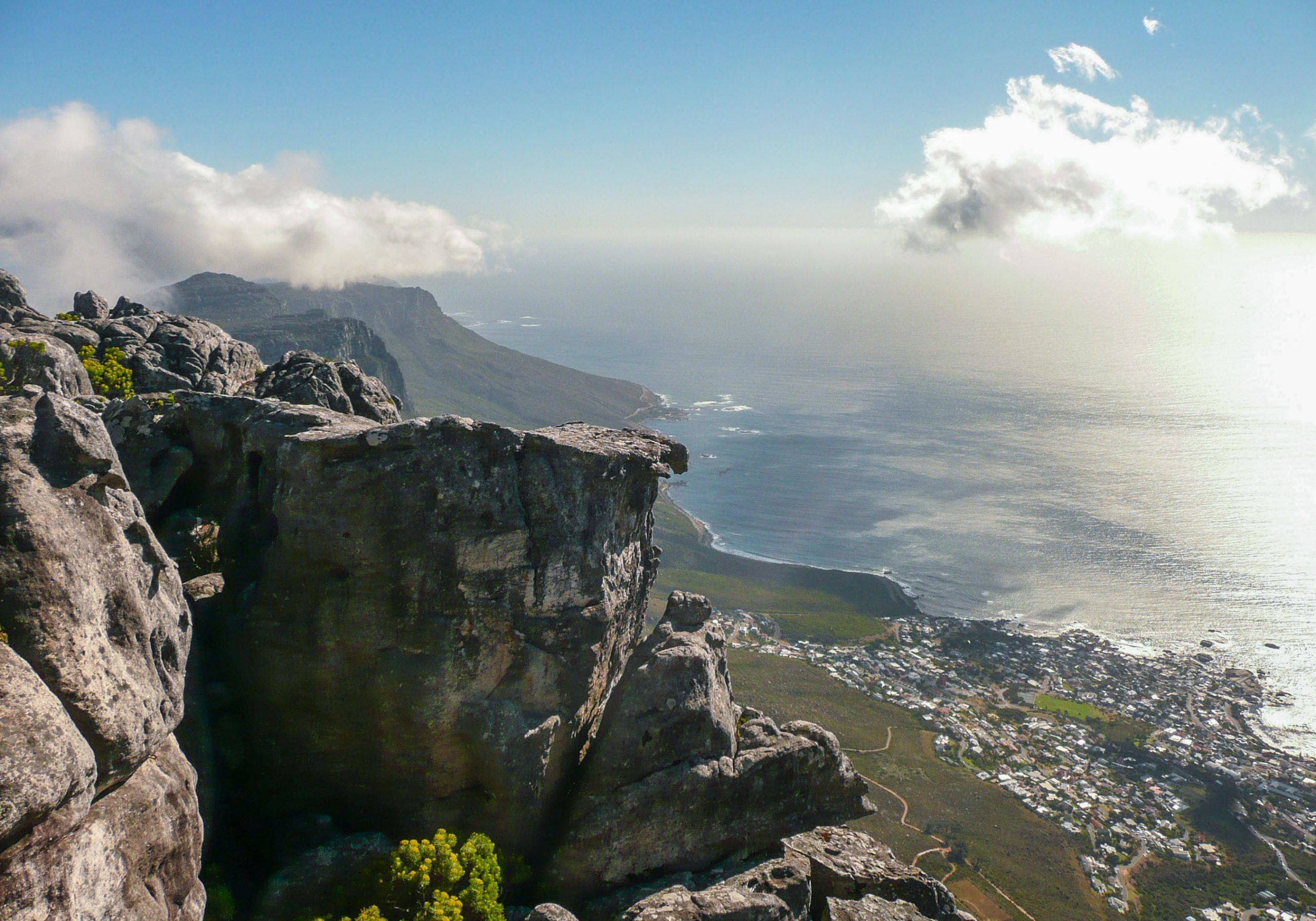
It is the backdrop to daily life, a mountain that doesn’t just sit above Cape Town but actively shapes it — its weather, its tourism, and its very identity.
Yet, standing at a distance and gazing up at Table Mountain is one thing. Standing on its plateau is something else entirely. Up there, the perspective flips — the city that once looked so vast now becomes part of the stage, while you, perched on its expansive summit, take your place in the amphitheatre.

The harbour glows in the distance, the ocean stretches beyond, and Cape Town unfolds in a breathtaking display of built and natural symbiosis.
Why Is Table Mountain So Famous?
Table Mountain’s distinctive flat summit makes it instantly recognisable, a geological marvel that has stood for years. It is one of the New 7 Wonders of Nature, an accolade that feels almost redundant when you see it firsthand.
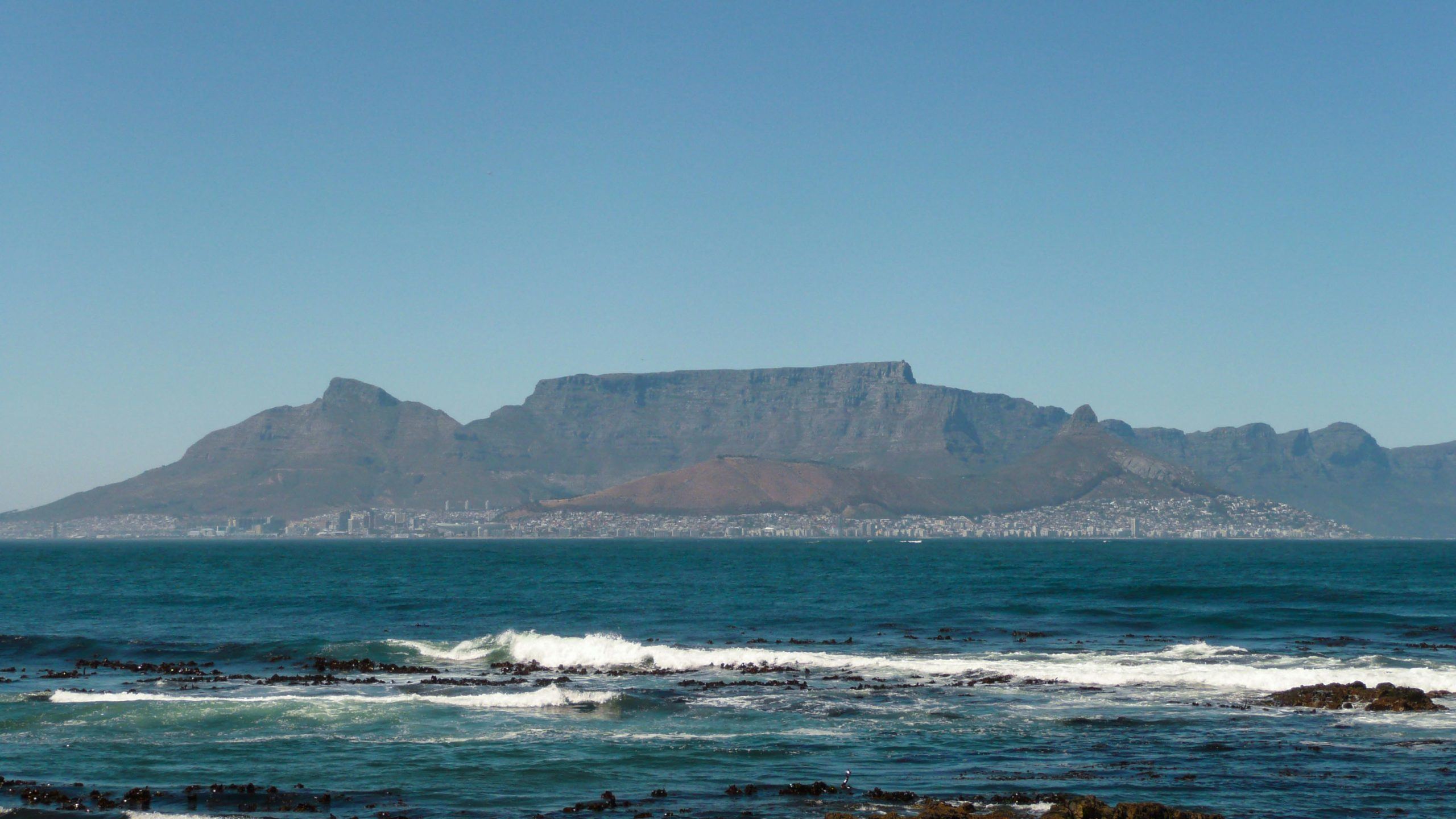
The mountain has a theatrical quality, particularly when the orographic clouds roll in, forming the famous “tablecloth” that drapes itself across the plateau. It’s a phenomenon that transforms the mountain from a static landmark into something alive, shifting with the wind, revealing and concealing its grandeur at will.
Beyond its beauty, Table Mountain is deeply rooted in history and culture. It was a sacred site for the Indigenous Khoisan people, a reference point for sailors rounding the Cape, and today, a hiker’s dream and a photographer’s paradise.
It is the kind of place that doesn’t just sit in the background of your trip — it becomes a core memory of your time in Cape Town.
How to Experience Table Mountain
Getting to the top of Table Mountain is an experience in itself, and there are two main ways to do it — the effortless way and the earned way.
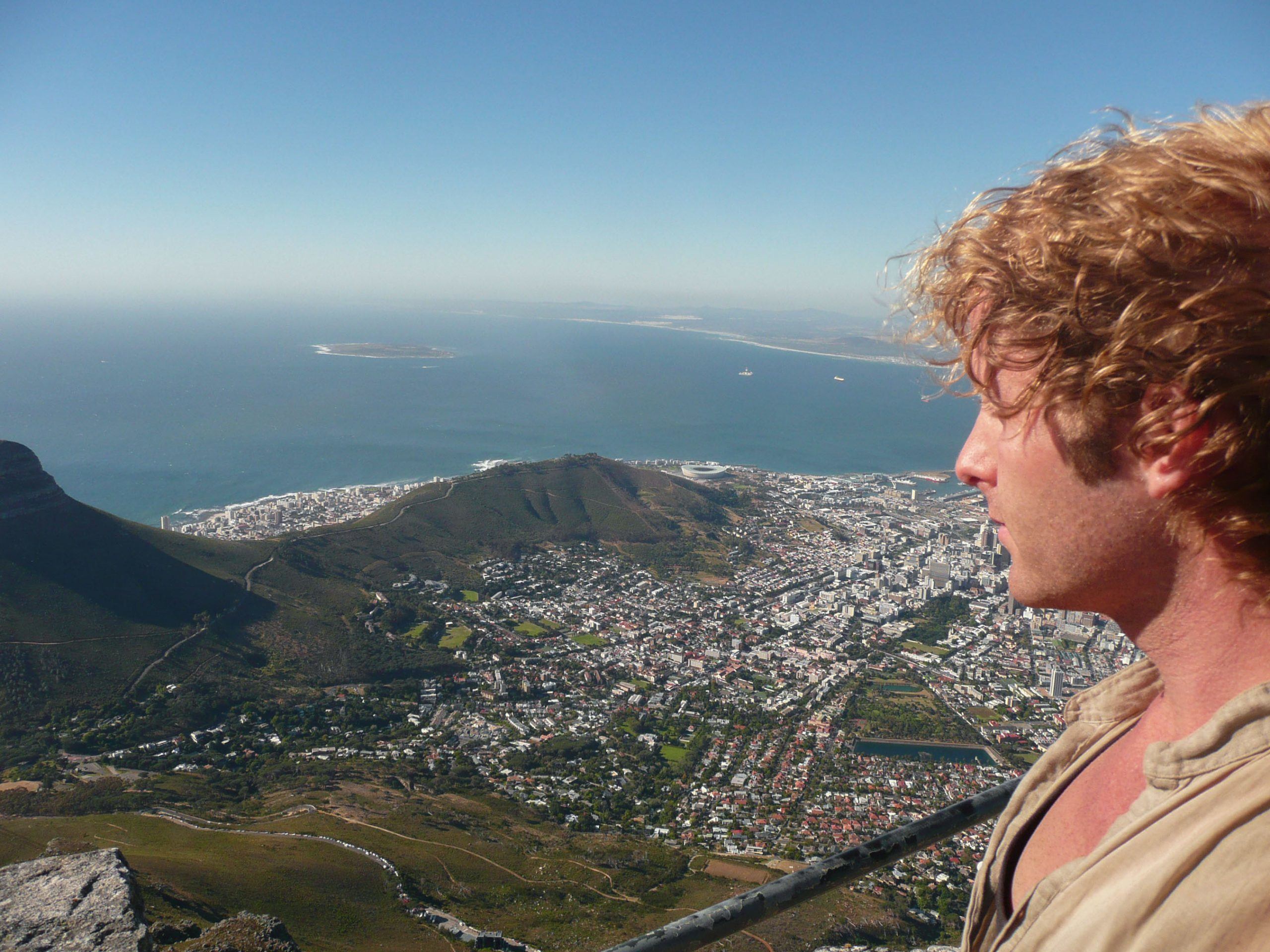
The Aerial Cableway is the quickest and easiest option, gliding smoothly up the mountainside in rotating cabins that provide 360-degree views as you ascend. The ride takes only a few minutes, but it’s enough time to appreciate the scale of the mountain, how it rises from the city and stretches towards the sky.
I took the cable car up and back, choosing to enjoy the changing perspectives without the sweat of the climb. Others, more adventurous, opt to hike up and return via cable car, balancing effort with ease.
For those who prefer the reward of the climb, Table Mountain offers several hiking routes, each with its own level of difficulty and perspective. The Platteklip Gorge trail is the most direct but also the steepest, a relentless series of stone steps that demand patience and endurance.
More scenic and challenging is the India Venster route, which involves a mix of hiking and scrambling over rocks, offering dramatic cliffside views along the way.
The most rewarding, for those with time and experience, is the Skeleton Gorge route, a lush, forested ascent from the Kirstenbosch Botanical Gardens, leading to the back of the mountain before emerging onto the plateau.
Best Time to Visit Table Mountain
Table Mountain dictates its own terms. The weather changes quickly, and the tablecloth of clouds can descend without warning, obscuring the views entirely.
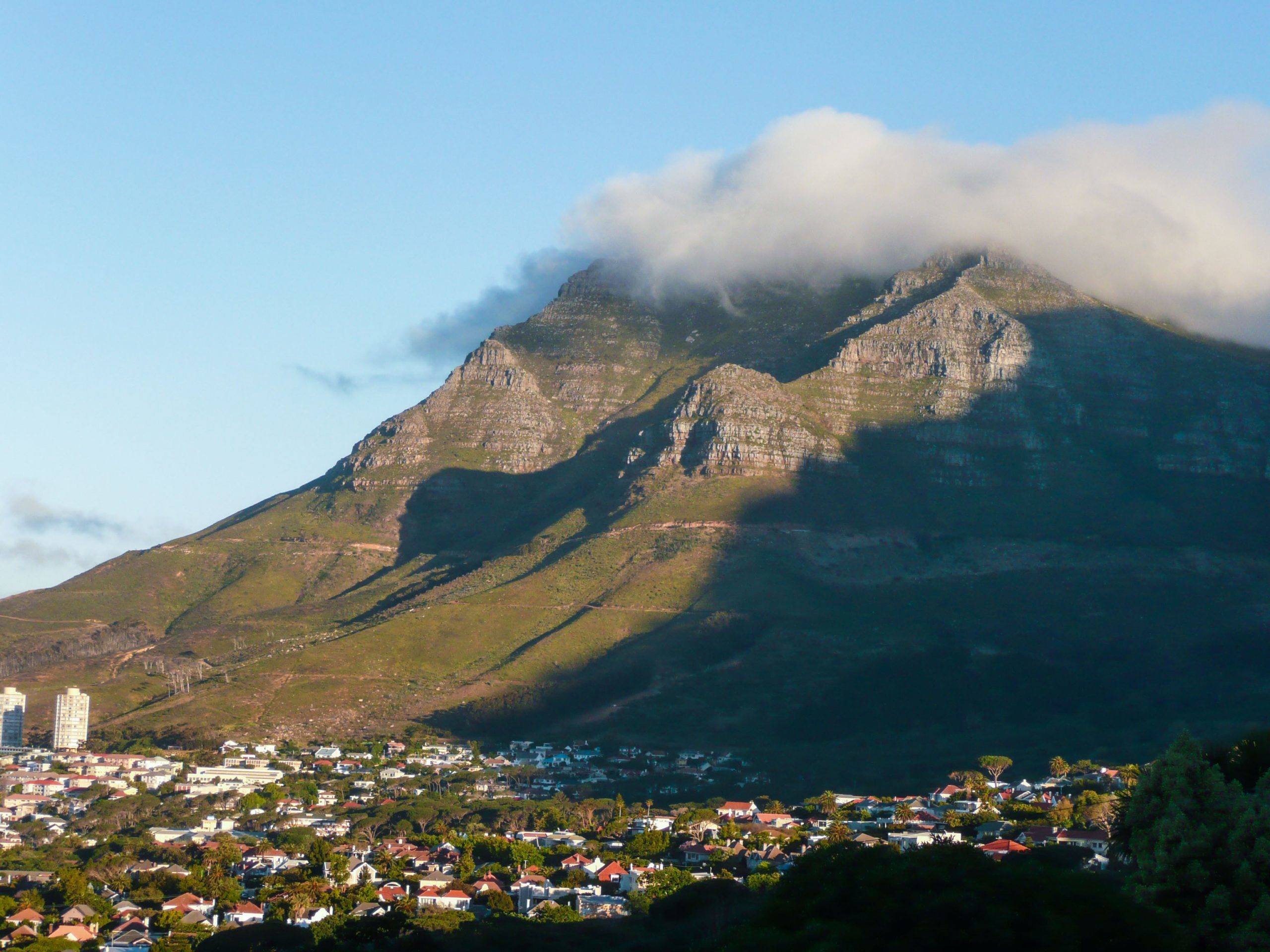
Mornings are often the best time to visit, as the skies tend to be clearer, while afternoons bring a higher chance of strong winds and fog. The cable car is frequently suspended due to wind conditions, so checking real-time weather updates before heading up is essential.
Even on a clear day, the mountain feels different depending on when you visit. At sunrise, it is a place of quiet solitude, the first light spilling across the city below.
By midday, it is alive with visitors, hikers catching their breath and photographers angling for the best shot. And at sunset, it becomes something else again — a golden vantage point, where the fading light casts Cape Town in a glow that feels almost surreal.
2. Robben Island – A Journey Through South Africa’s History
Robben Island is a place where history lingers in the air, where silence feels weighted with memory. It is not just an island but a symbol — of oppression, resilience, and ultimately, redemption.
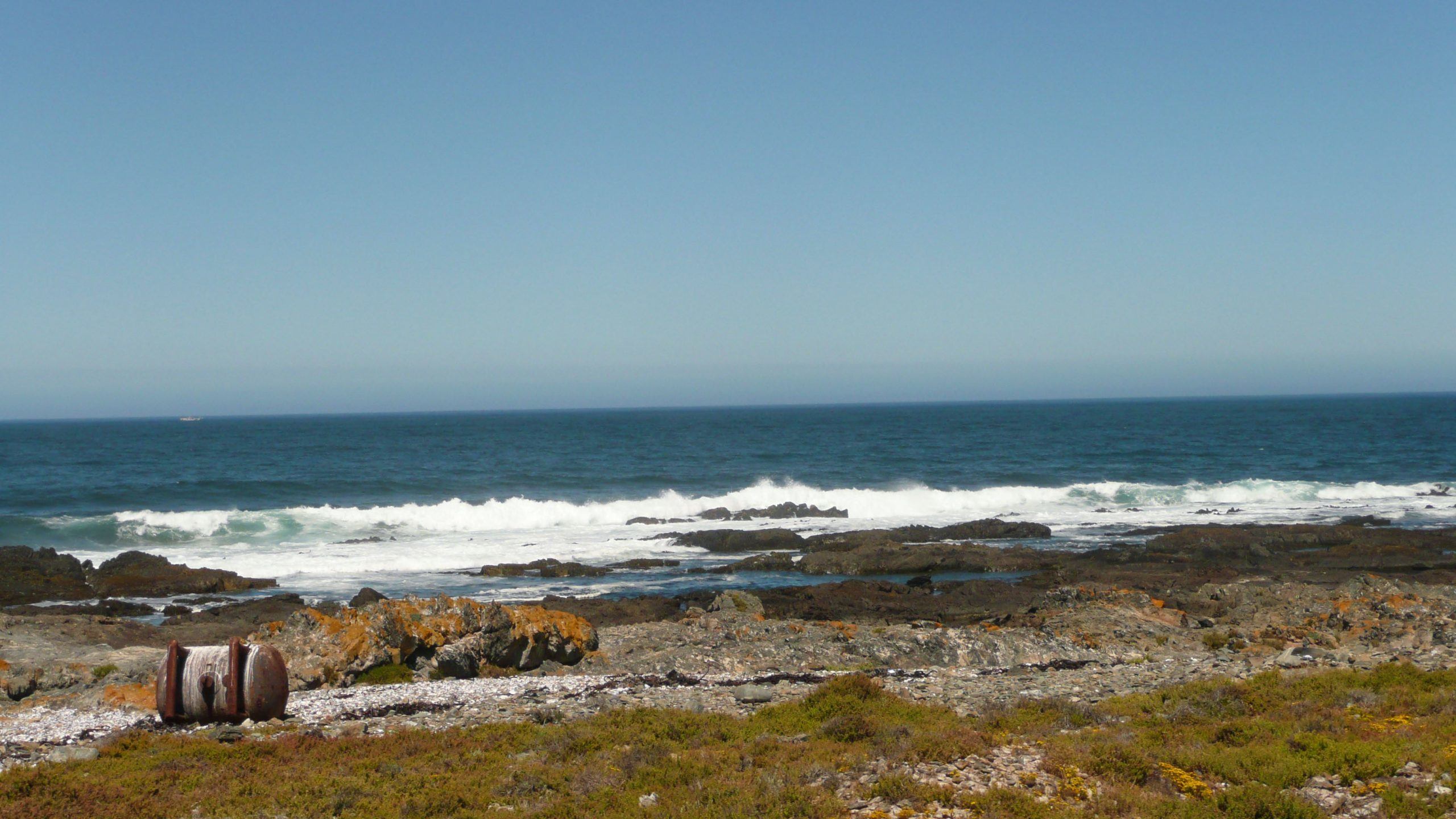
Located just off the coast of Cape Town, its name is inseparable from South Africa’s long struggle for freedom. I went there expecting a history lesson. What I got was something far more visceral — a place that makes you feel the past, not just hear about it.
What Is Robben Island Known For?
Robben Island has been many things over the centuries — a place of exile, a leper colony, a military outpost — but its most infamous role was as a political prison during South Africa’s apartheid era. For nearly two decades, Nelson Mandela was confined here, along with countless other activists who fought against racial segregation and injustice.
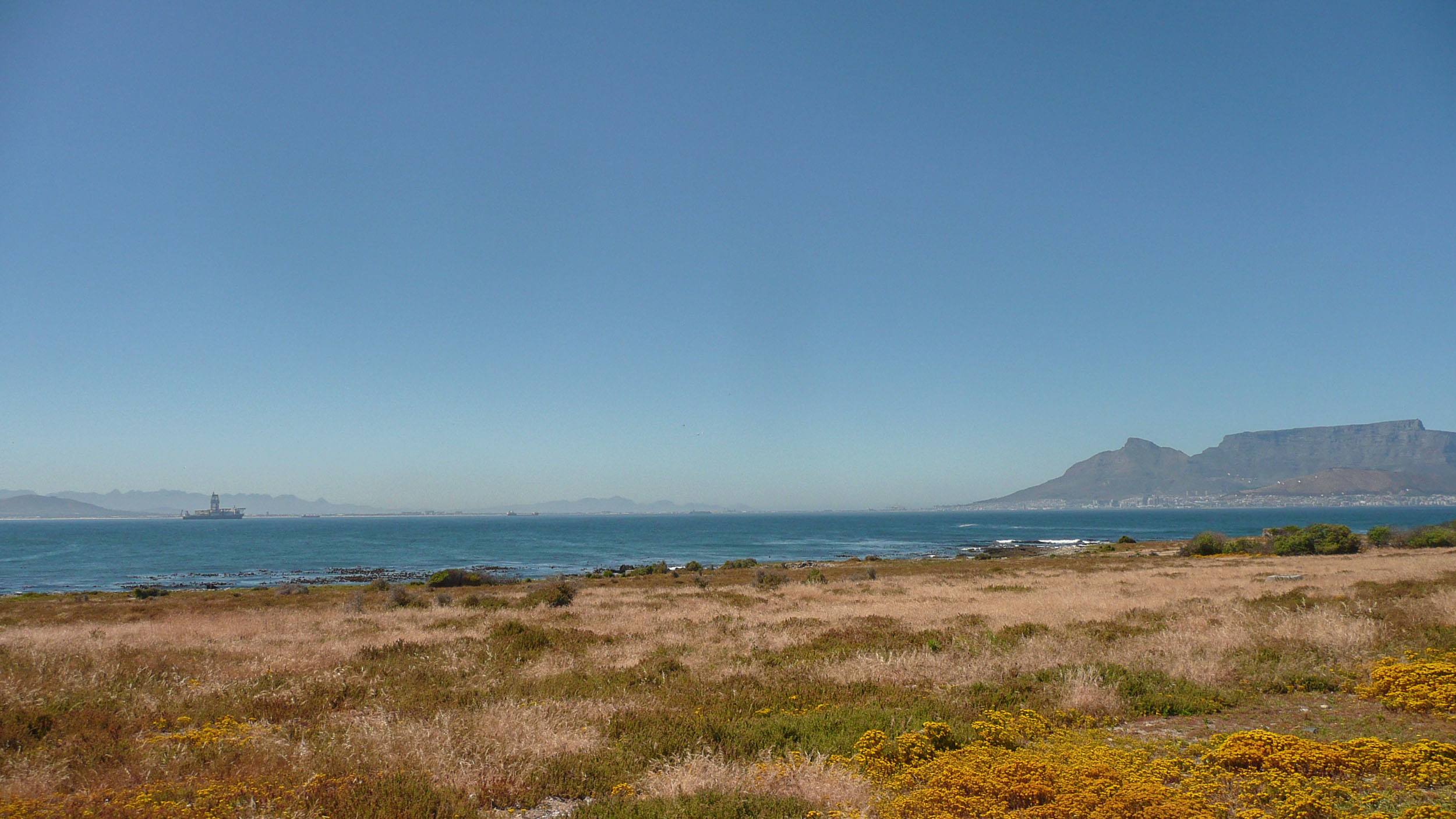
It was a prison designed not just to punish but to break the human spirit, isolating inmates from their families, their country, and the world.
Yet, somehow, it became a place where the very ideas that apartheid sought to crush — hope, unity, and resilience — grew stronger.
Incredibly, three of South Africa’s post-apartheid presidents — Nelson Mandela, Kgalema Motlanthe, and Jacob Zuma — were once prisoners here. That alone speaks to the paradox of this place: a site of suffering that also became a cradle of leadership.
Beyond its political history, Robben Island holds other, lesser-known stories. Before it was a prison, it was a leper colony, a place where people with Hansen’s disease were forcibly sent to live out their days, further reinforcing its legacy of enforced isolation.
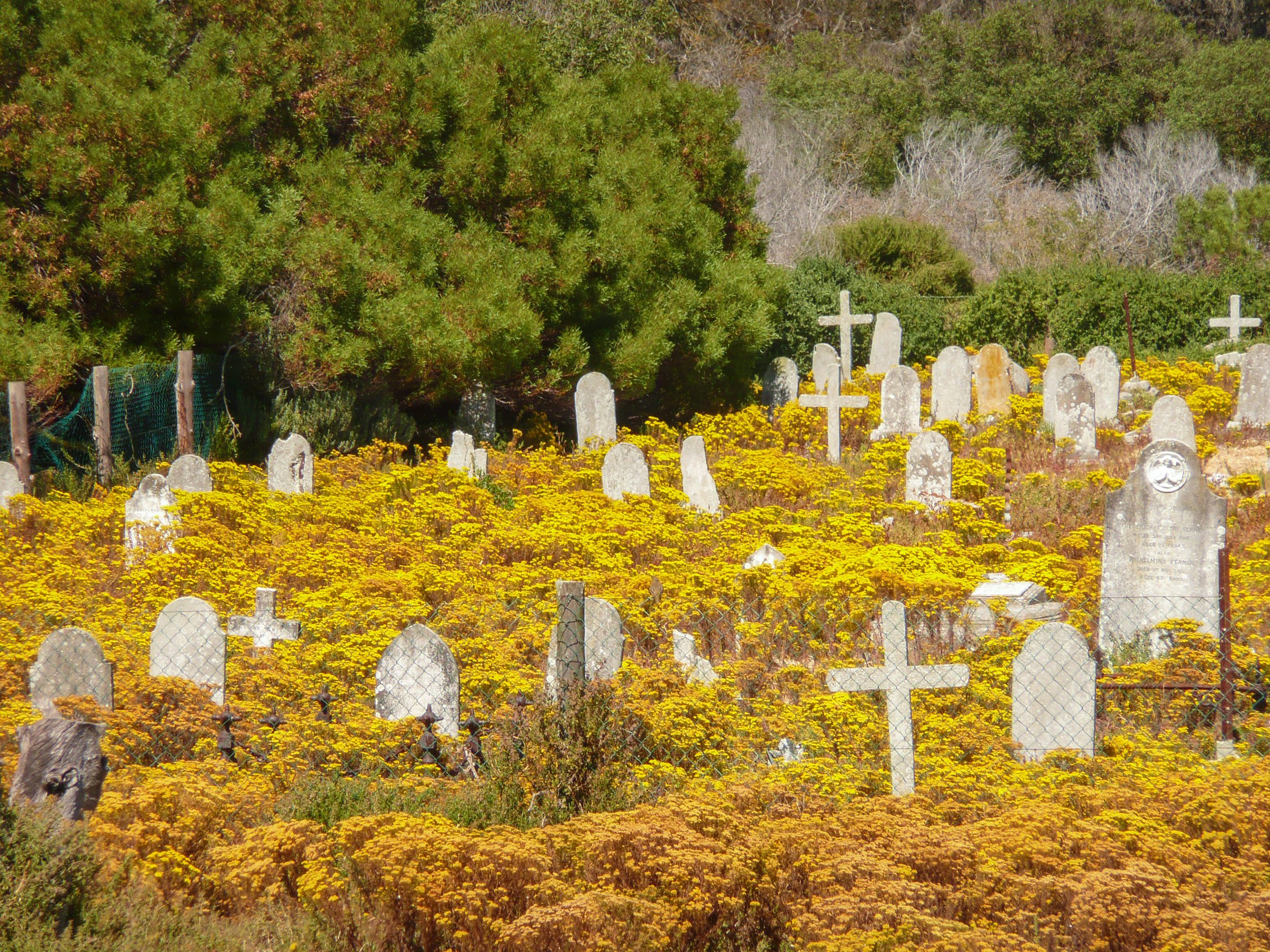
The island is a UNESCO World Heritage Site, not just for what happened here, but for what it represents — a past that cannot be forgotten and a lesson that must not be ignored.
How to Visit Robben Island
Visiting Robben Island is not just another Cape Town day trip — it’s an experience that requires time, reflection, and a willingness to listen.
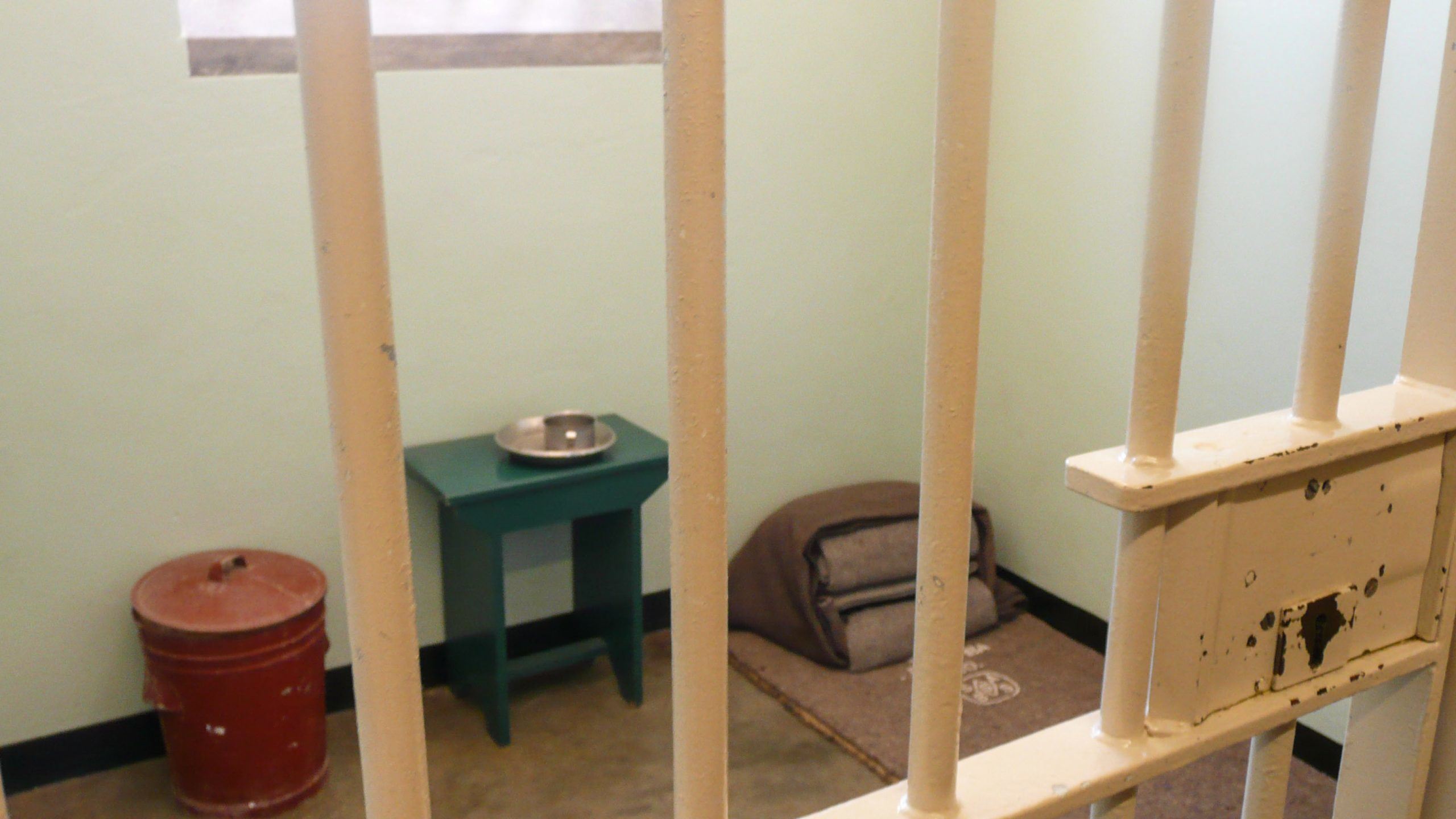
Tours begin at the Nelson Mandela Gateway at the V&A Waterfront, where you’ll board a ferry for the 30-minute journey across Table Bay. The ride itself offers a striking contrast — Cape Town’s beauty behind you, Robben Island’s starkness ahead.
Once on the island, you’re taken on a compulsory guided tour, often led by former inmates who recount their personal experiences with an honesty that is both humbling and unsettling. I had a different guide, but the weight of history was no less powerful.
The tour includes a walk through the maximum-security prison, where Mandela’s tiny cell remains preserved (picture above) — a stark reminder of the conditions endured by prisoners.
Beyond the prison, the tour extends across the island, stopping at sites like Robert Sobukwe’s house, where the anti-apartheid leader was kept in solitary confinement for years, and the church used during the leper colony years, a haunting remnant of another chapter in the island’s history.
Throughout, the wind carries stories — of whispered conversations between prisoners, of punishments endured, of a past that still echoes in the present.
What to Expect on the Island
Robben Island is not a comfortable place — and that is exactly why it is worth visiting.

The landscape is barren, the buildings utilitarian, the air heavy with history. Yet, amid the starkness, there are moments of quiet beauty. A warm breeze carries across the island, sweeping over fields of red, yellow, and orange veld flowers before returning to the sea.
And from the shore, the best view of Cape Town and Table Mountain unfolds (seen in the picture above) — a vision of freedom that, for many, remained out of reach for decades.
I left Robben Island feeling both drained and deeply moved. It is not a place you visit for entertainment, but for understanding.
It forces you to confront a history that is uncomfortable but necessary to remember. More than just a tourist attraction, it is a place of reckoning — a reminder that the past is never as far away as we think.
3. Cape Town’s Beaches – Atlantic vs. Indian Ocean
Cape Town’s beaches are a study in contrasts, shaped by the rare meeting of two mighty oceans. The Atlantic and Indian Oceans converge along the Cape Peninsula, creating two distinct coastal experiences that make Cape Town one of the most unique beach destinations in the world.
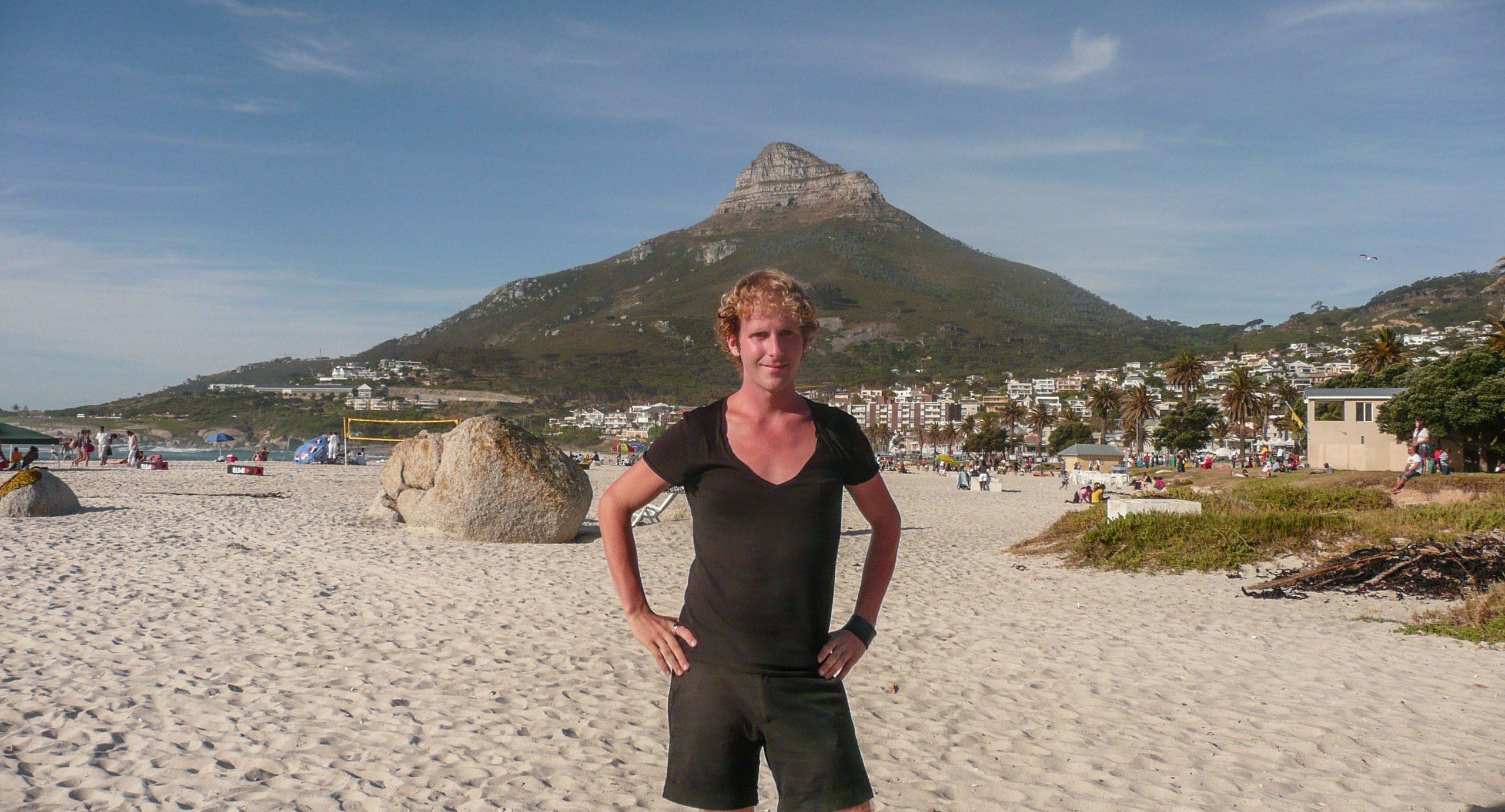
Few places offer the choice between crisp, refreshing Atlantic waters with dramatic scenery and warmer, gentler Indian Ocean bays perfect for relaxed swimming.
What Makes Cape Town’s Beaches Special?
Cape Town’s coastline isn’t just diverse — it feels like two separate worlds.
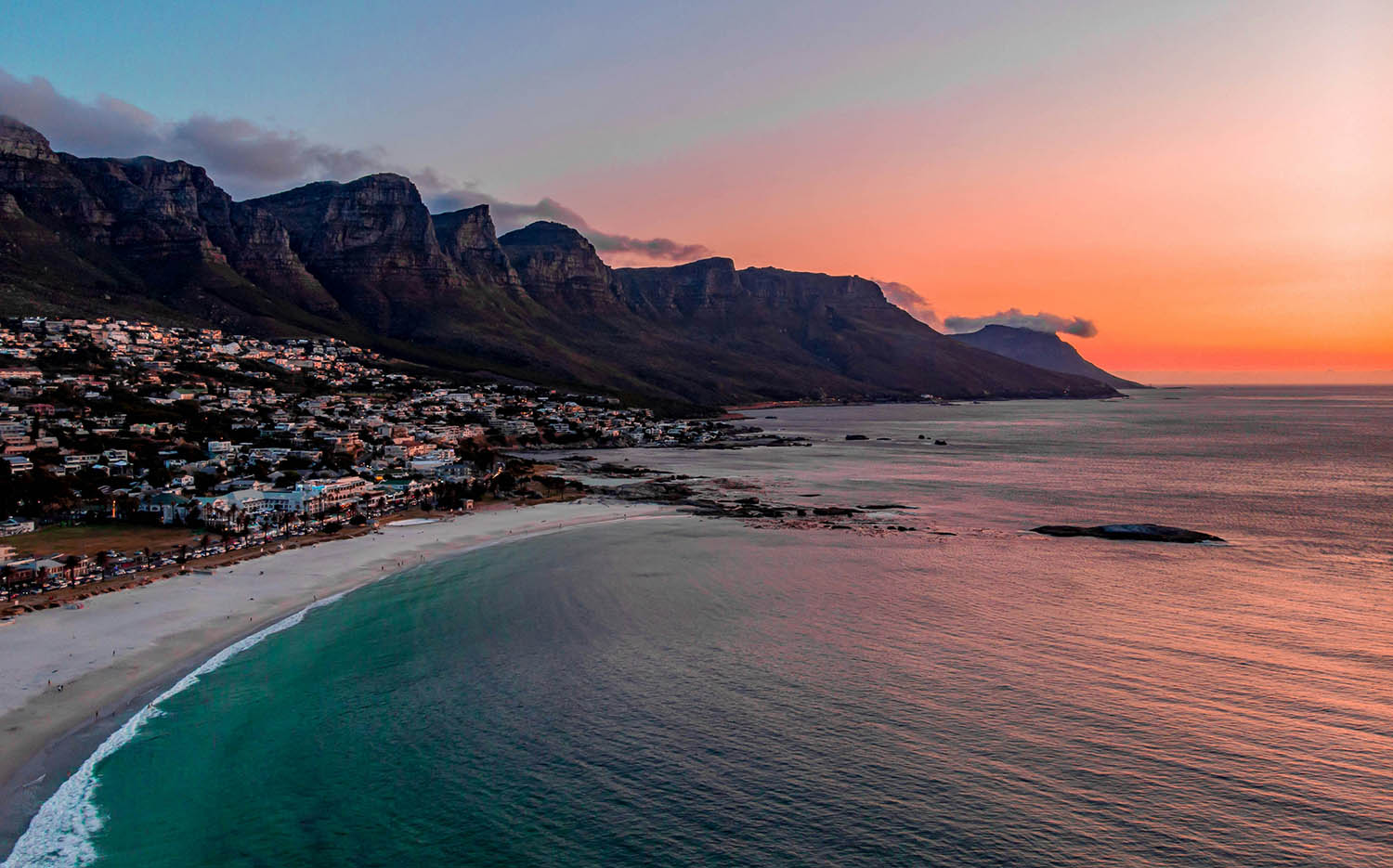
On one side, the Atlantic beaches offer rugged beauty, cooler waters, and jaw-dropping sunsets. They are where you’ll find sophisticated seaside neighbourhoods, bustling beach bars, and a crowd that appreciates a mix of scenery and style.
But while the golden-hour views are unbeatable, the Atlantic waters can be bracingly cold, often dropping below 15°C (59°F), making swimming more of a thrill than a leisurely dip.
Cross to the Indian Ocean side, however, and the experience changes entirely. Here, the waters are noticeably warmer, calmer, and more inviting, particularly in bays where the coastline shelters the beaches. These beaches are family-friendly, perfect for a relaxed swim or floating in shallower waters.
I spent most of my time swimming on this side, where the sea didn’t deliver the same icy shock as the Atlantic, though I made a point to visit both.
Regardless of which coastline you choose, the beaches all share one thing: spectacular scenery. Whether framed by towering cliffs, rolling dunes, or coastal fynbos, they are some of the most picturesque in the world. The salty air, soft white sand, and endless blue horizons create a setting that feels untouched and wild yet completely accessible.
Best Beaches in Cape Town
Cape Town’s beaches cater to all kinds of visitors, from adventure-seekers to families looking for a tranquil retreat. Each beach has its own personality, shaped by the ocean that defines it.
Best for Surfing – Muizenberg & Llandudno
If you’re chasing waves, Muizenberg Beach is Cape Town’s surf capital. Located on the Indian Ocean side, its long stretch of gentle, rolling waves makes it the perfect place for beginners, with dozens of surf schools ready to get you on a board. The colourful beach huts add a vibrant backdrop, giving it a lively and unmistakable character.
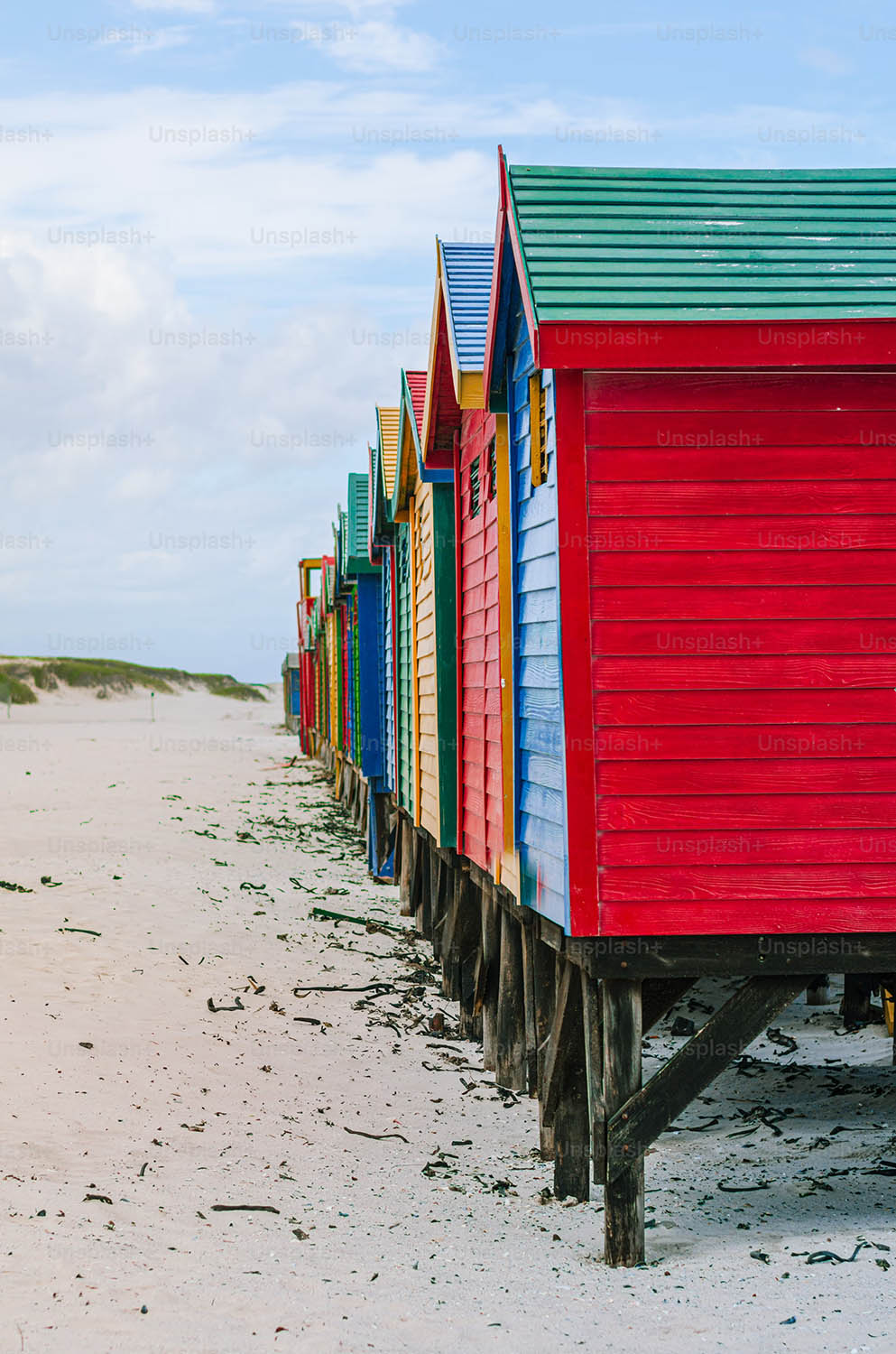
For something more challenging, Llandudno Beach on the Atlantic side offers powerful swells and a rugged, unspoiled setting. Unlike Muizenberg, there are no beachfront cafés or facilities — just a crescent of soft sand, framed by granite boulders and backed by steep hills. The waves here are for serious surfers only, but even if you’re not riding them, the scenery alone makes it worth a visit.
Best for Sunbathing – Camps Bay & Clifton Beach
If Cape Town has a glamour beach, it’s Camps Bay. With its palm-lined promenade, high-end restaurants, and dramatic mountain backdrop, it feels more like the French Riviera than the southern tip of Africa. The vibe is social and lively — a place to see and be seen.
The water, however, is unmistakably Atlantic, which means that while the sand is warm and inviting, the sea demands bravery.
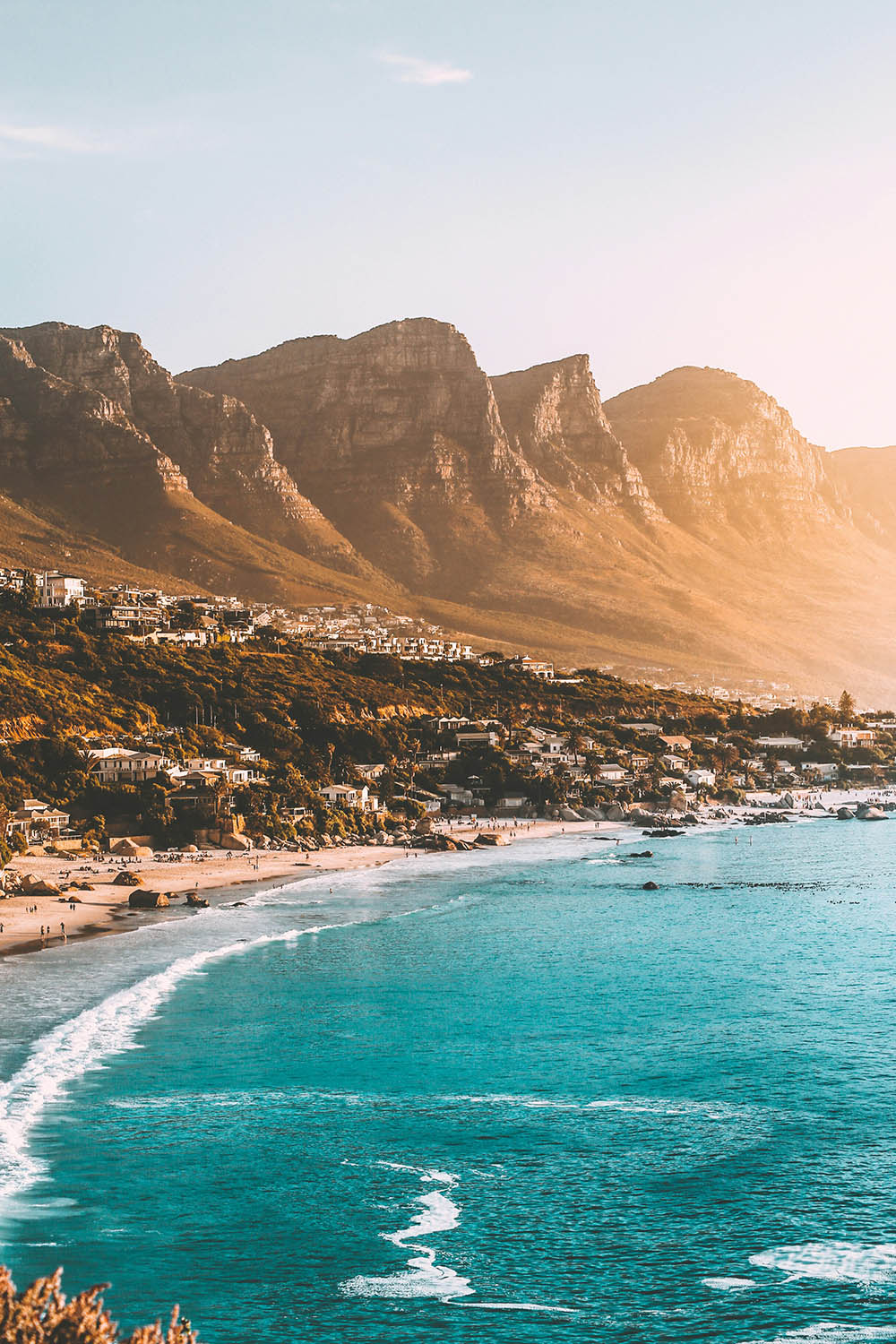
For a more secluded and sheltered experience, Clifton Beach offers four separate coves, each with pristine white sand and natural wind protection. Clifton’s beaches are a local favourite because they shield visitors from Cape Town’s notorious summer winds, making them ideal for sunbathing even when the breeze picks up elsewhere.
Best for Family-Friendly Fun – Boulders Beach & Fish Hoek
For a beach experience unlike any other, Boulders Beach is a must-visit — not just for its calm, shallow waters, but because it’s home to a colony of African penguins. Swimming here feels surreal, as these charismatic birds waddle and dive just metres away. It’s one of the only places in the world where you can share a beach with penguins, and it’s a firm favourite for families.
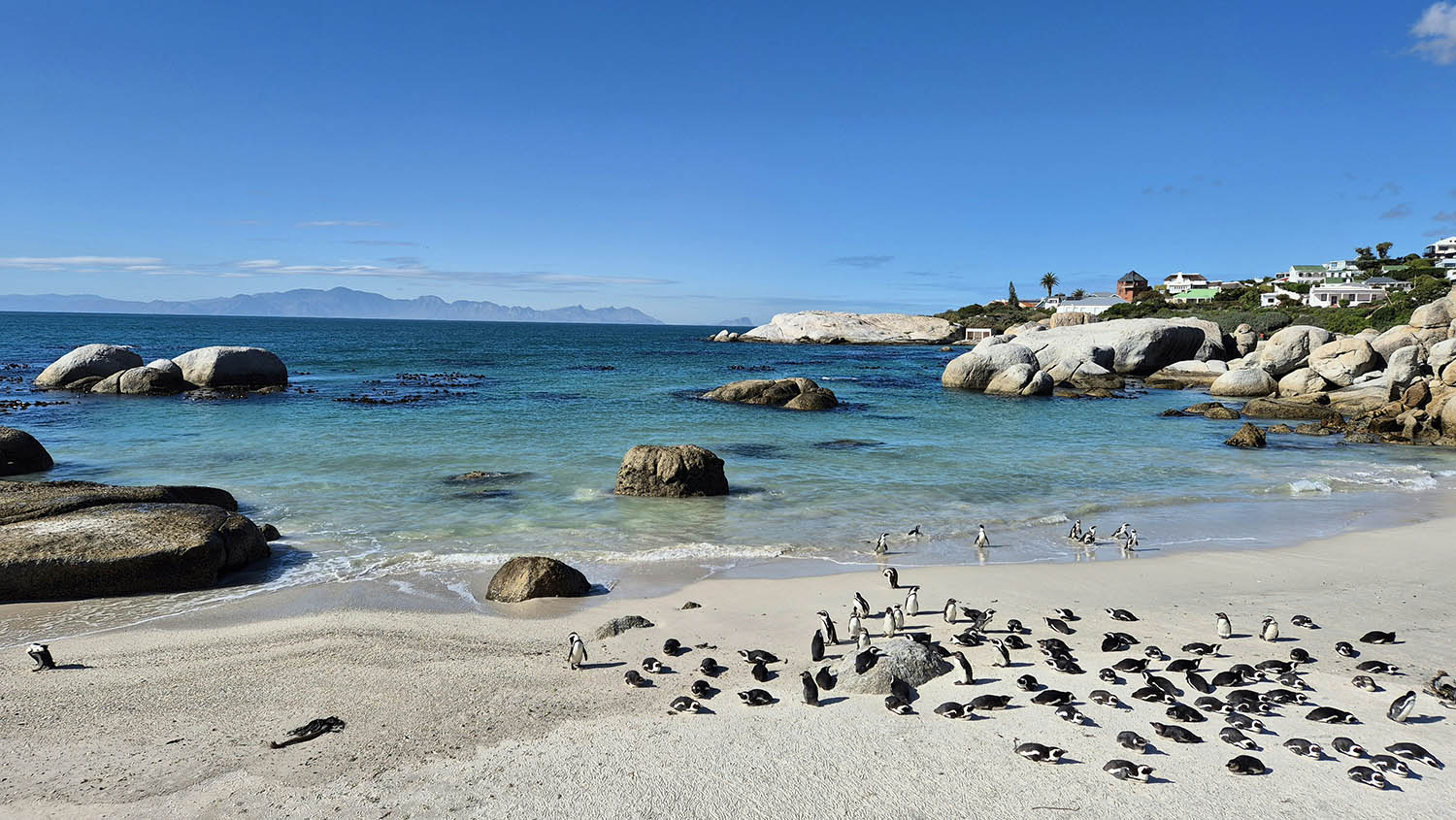
Meanwhile, Fish Hoek Beach is one of Cape Town’s safest and most swimmable beaches, thanks to its warm, gentle waves and absence of strong currents. It’s the kind of place where children can splash in the shallows while parents relax under an umbrella. Unlike the trendier beaches, Fish Hoek has a more laid-back, local atmosphere, making it ideal for those looking for a classic beach day without the crowds.
4. The Bo-Kaap – Culture, Colour, and Cape Malay Heritage
There are few places in Cape Town that immediately capture the imagination quite like the Bo-Kaap. Tucked beneath Signal Hill, this historic neighbourhood is a striking patchwork of colour, culture, and resilience.
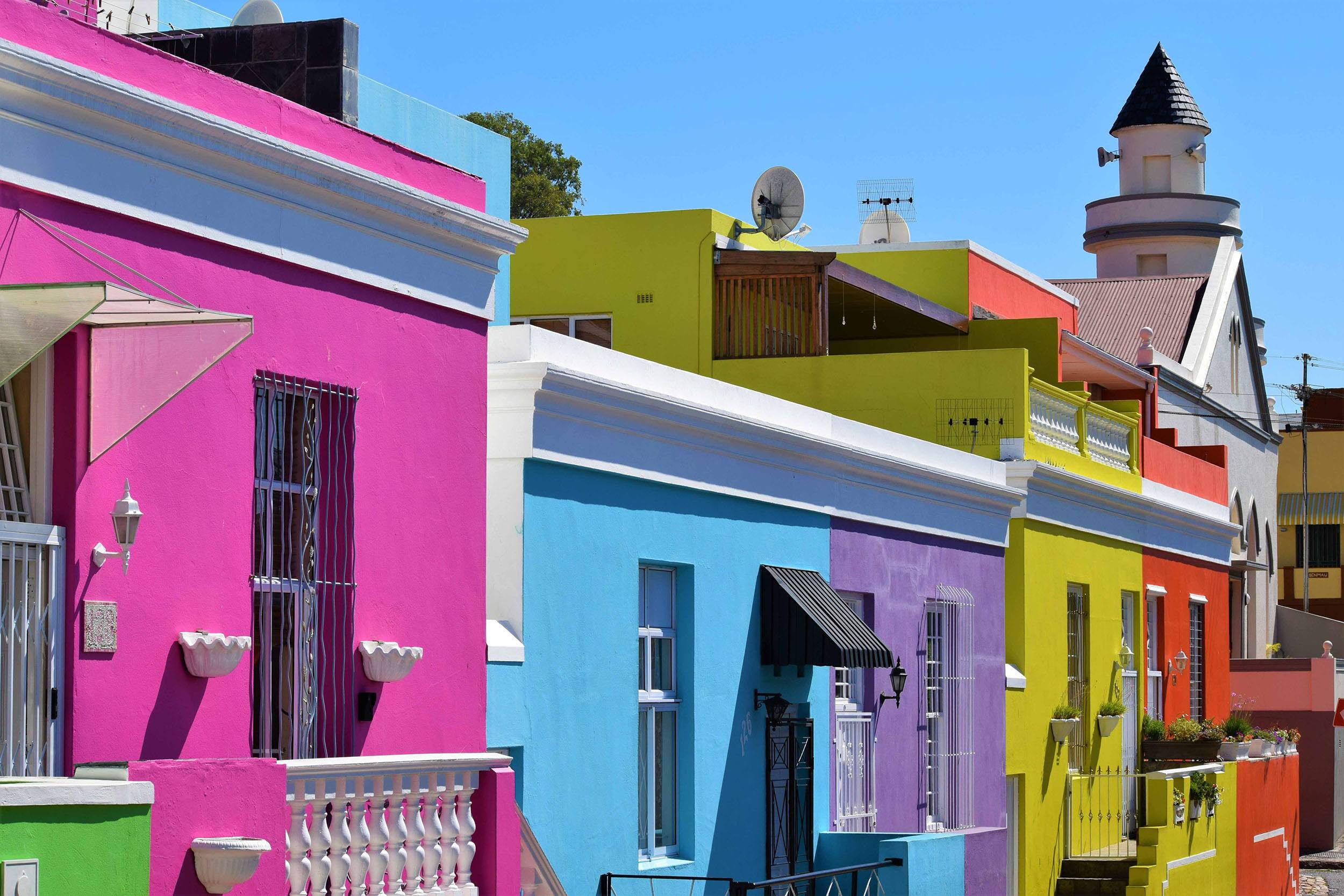
I remember my first time wandering through its cobbled streets, caught between the scent of spiced curries drifting from kitchens and the brilliant hues of lime greens, fiery oranges, and deep blues painted across the buildings.
The Bo-Kaap isn’t just visually unforgettable — it tells a story of identity, survival, and the fight for cultural preservation.
Why Visit Bo-Kaap?
The Bo-Kaap is one of Cape Town’s most historically significant districts, with origins dating back to the 17th century. Formerly known as the Malay Quarter, it became home to Southeast Asian slaves, forcibly relocated here by the Dutch.
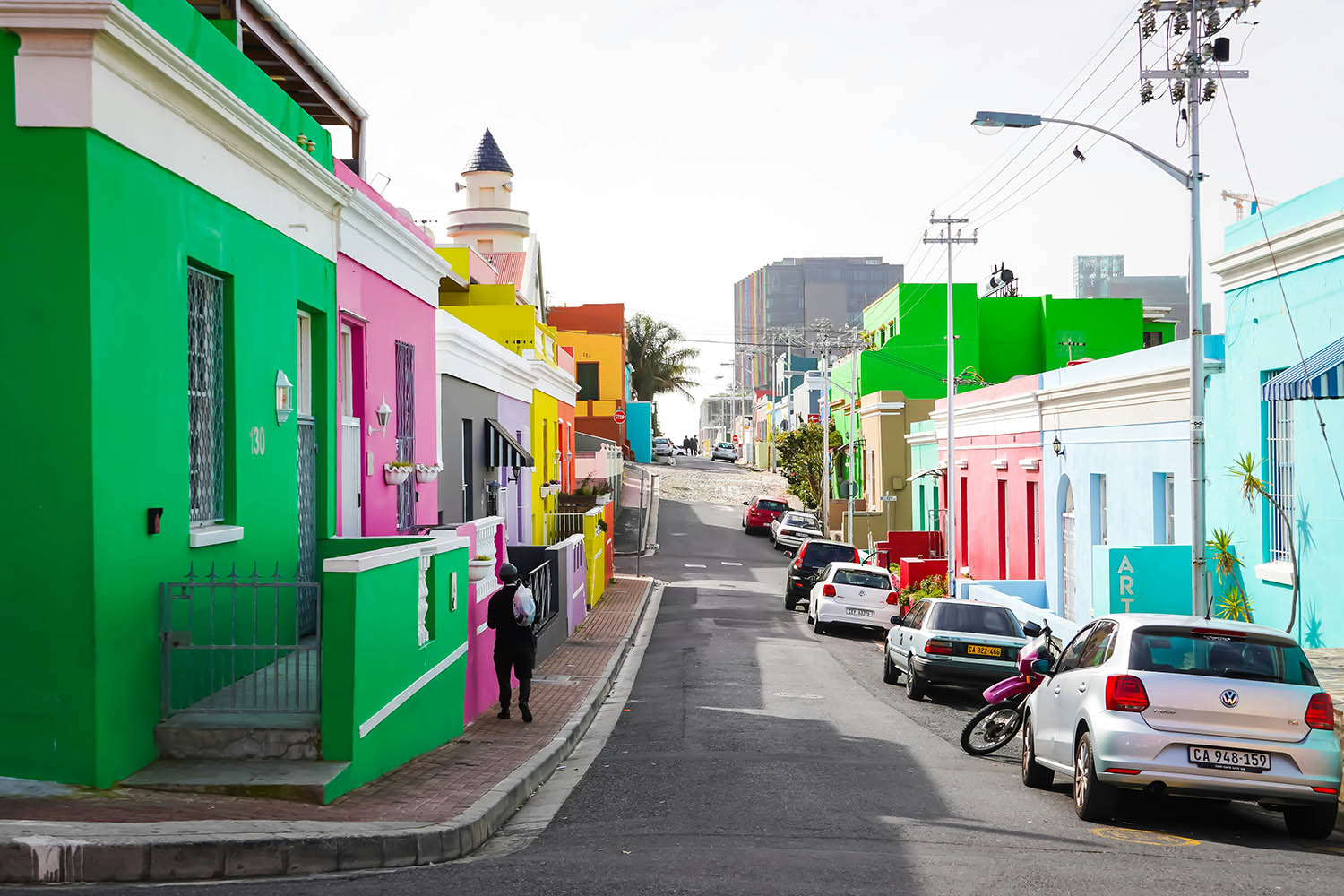
When slavery was abolished in the 19th century, the residents — many of whom were Muslim, craftsmen, traders, and cooks — transformed the area into something of their own. The huurhuisjes (rental houses), once uniform and dull, were painted in bright, bold colours — a symbol of newfound freedom and an expression of cultural identity that remains today.
Despite its postcard-like appearance, the Bo-Kaap is not just an aesthetic attraction. It remains an active community, deeply rooted in Cape Malay traditions, food, language, and faith.
Walking its streets is a step into one of Cape Town’s most enduring stories.
How to Explore Bo-Kaap
I found that the best way to experience Bo-Kaap is on foot — slowly, deliberately, and with curiosity. The neighbourhood’s narrow, sloping streets invite exploration, whether you’re there for the history, the architecture, or the energy of daily life.
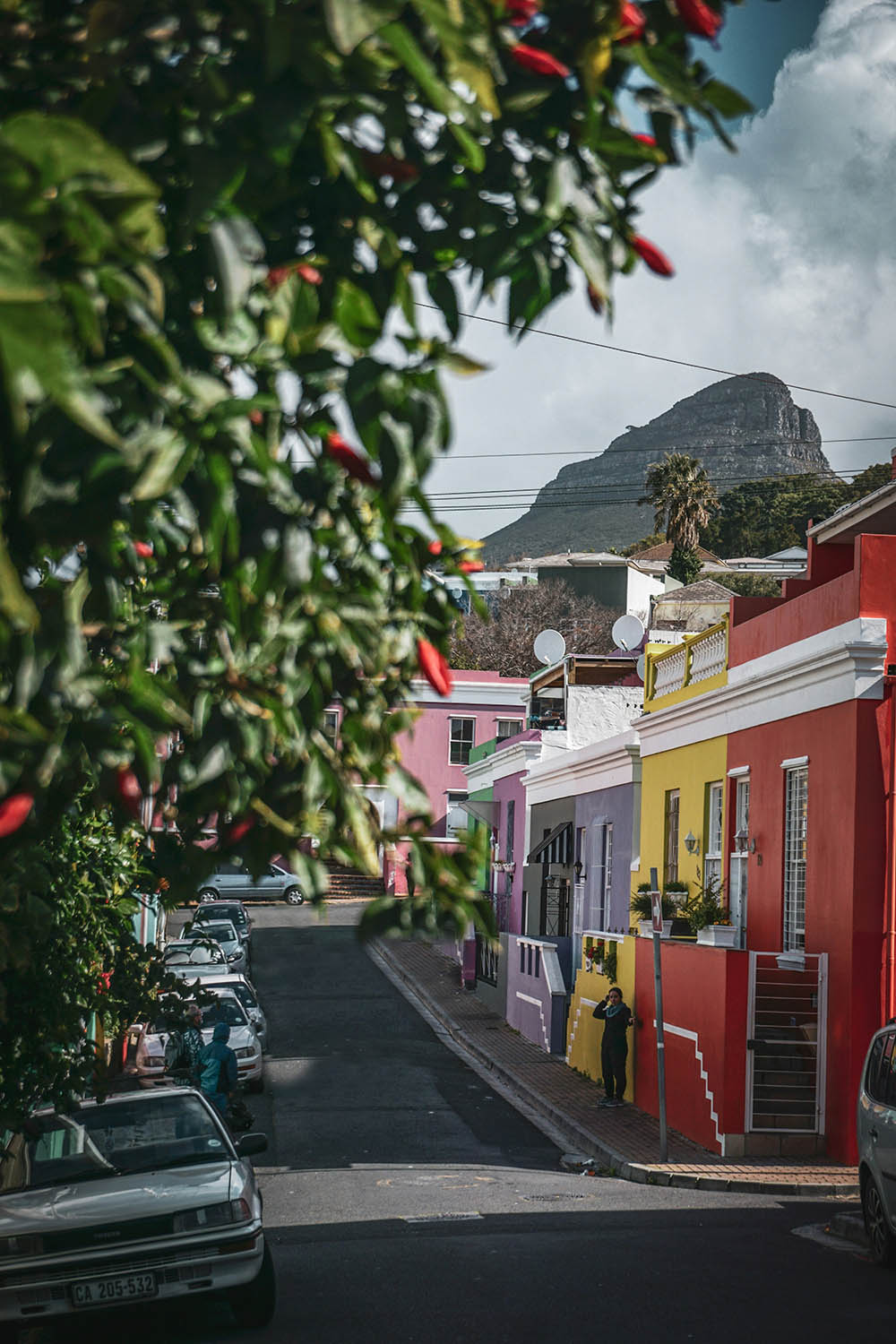
For those who prefer independent wandering, a self-guided walk allows for a more personal experience. I took my time weaving through the streets, admiring intricate doorways, stopping to chat with locals, and soaking up the atmosphere.
But for a deeper understanding, a guided tour — whether on foot or by bike — offers insight into the neighbourhood’s past and its ongoing struggles to resist gentrification. Some tours even include a home-cooked Cape Malay meal, which I highly recommend.
Must-Visit Spots in Bo-Kaap
One of the best ways to understand the Bo-Kaap is to visit its cultural landmarks. The Bo-Kaap Museum, housed in one of the oldest buildings in the area, provides a glimpse into the lives of the early residents — how they lived, worked, and adapted to their new home in Cape Town.
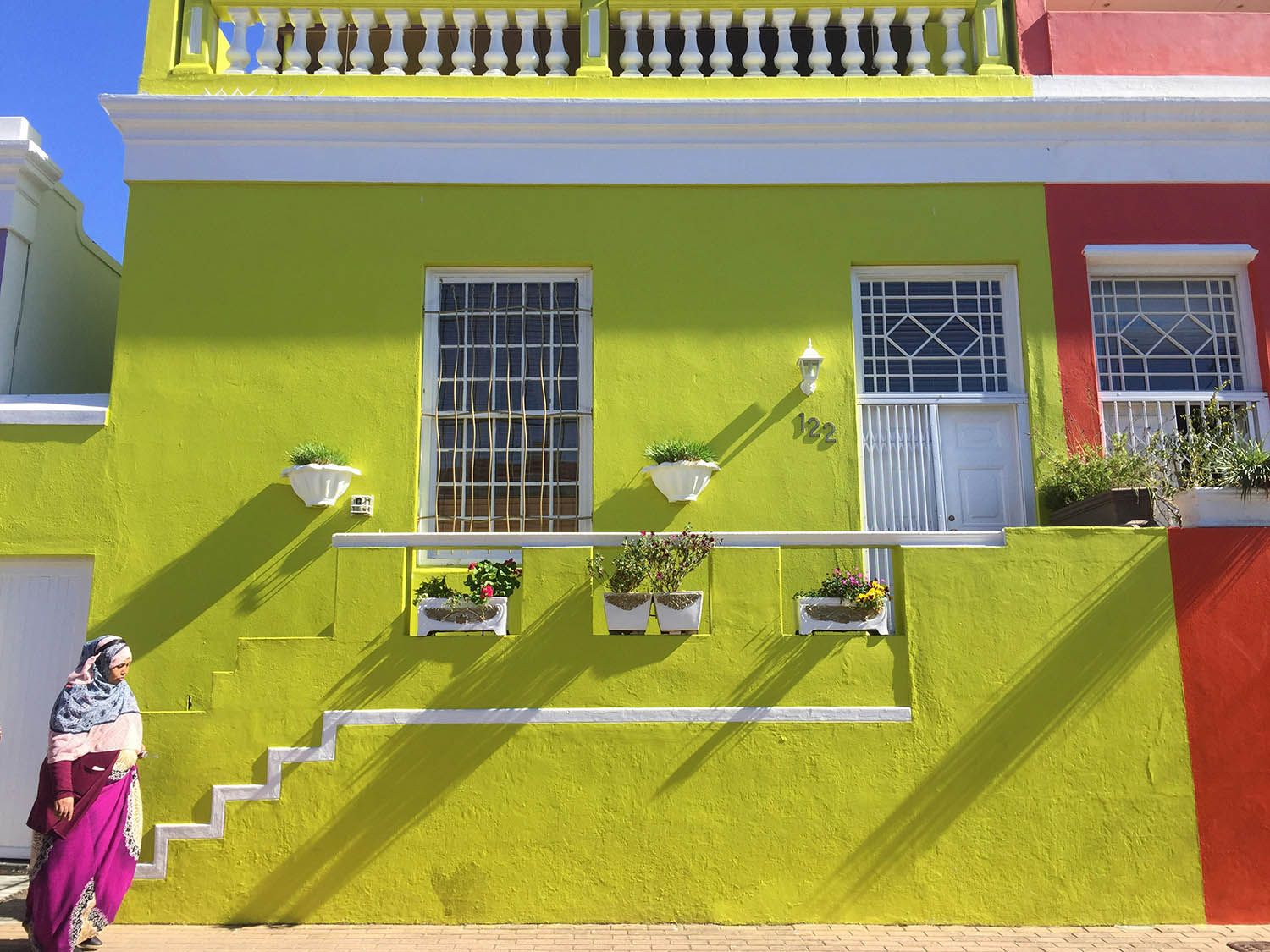
For those interested in flavours and spices, a stop at Atlas Trading is a must. This legendary spice shop has been selling fragrant Cape Malay spices for generations, and the shelves are stacked with cinnamon, cardamom, turmeric, and masala blends that form the backbone of the neighbourhood’s cuisine.
And, of course, the streets themselves are a highlight. Whether you visit in the early morning light, when the colours seem to glow against the sky, or in the late afternoon when shadows stretch across the cobbles, Bo-Kaap offers one of the most captivating street photography settings in Cape Town.
5. The Cape Winelands – A Taste of South Africa
Just beyond Cape Town, the landscape shifts — vineyards stretch into the horizon, their neat rows rolling over hills, framed by mountains that seem almost deliberately placed for dramatic effect.
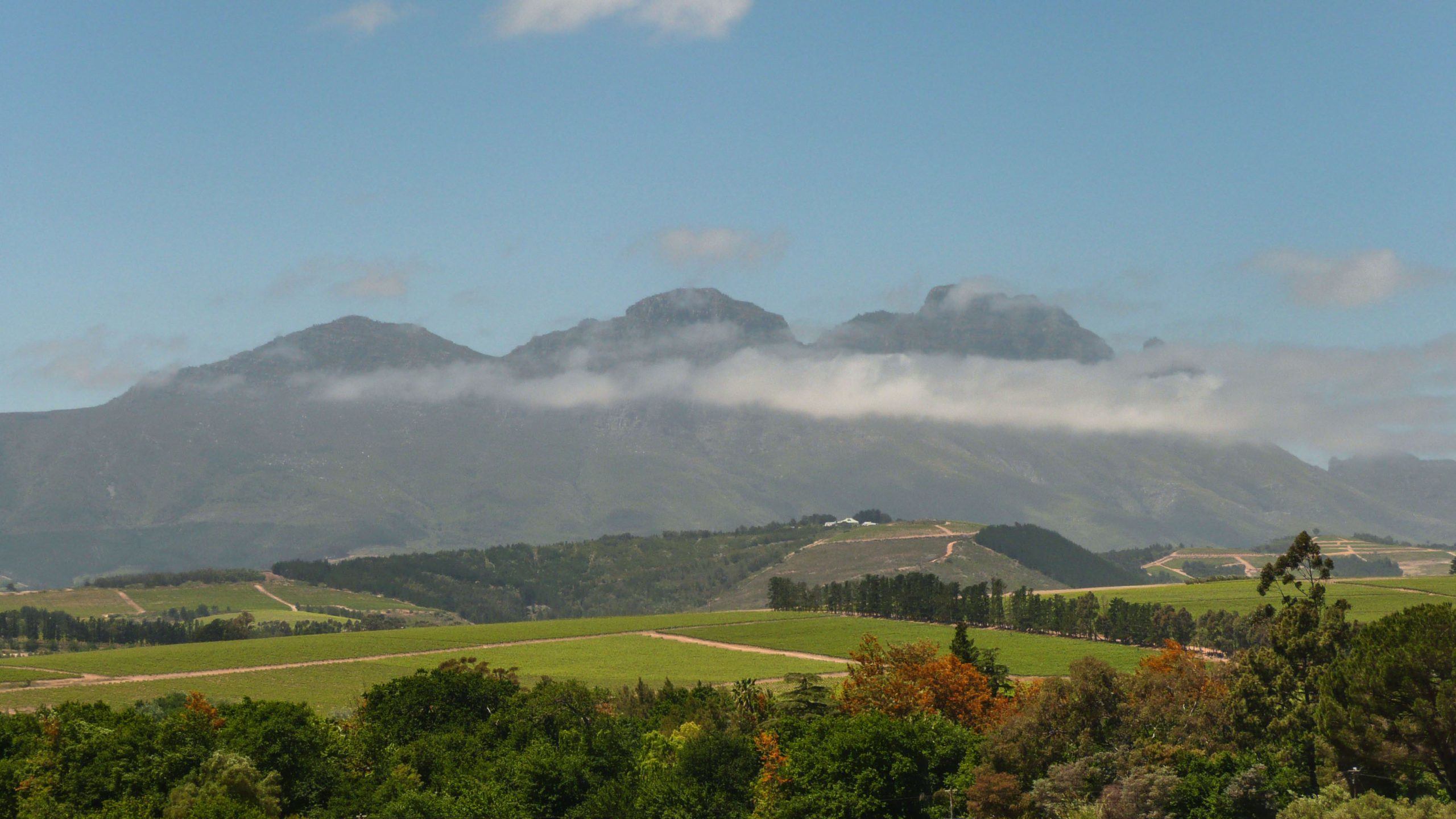
This is the Cape Winelands, one of the most celebrated wine-producing regions in the world. I didn’t need to be a wine connoisseur to appreciate it; the experience of sampling world-class wines in an impossibly scenic setting was reason enough to go.
Why Is Cape Town Famous for Wine?
South Africa’s wine industry is globally renowned, and the Cape Winelands are its beating heart. The region’s Mediterranean-like climate, with warm summers and cooling ocean breezes, creates ideal conditions for viticulture, allowing vineyards to produce everything from bold reds and crisp whites to delicate rosés and Methode Cap Classique (South Africa’s take on Champagne).
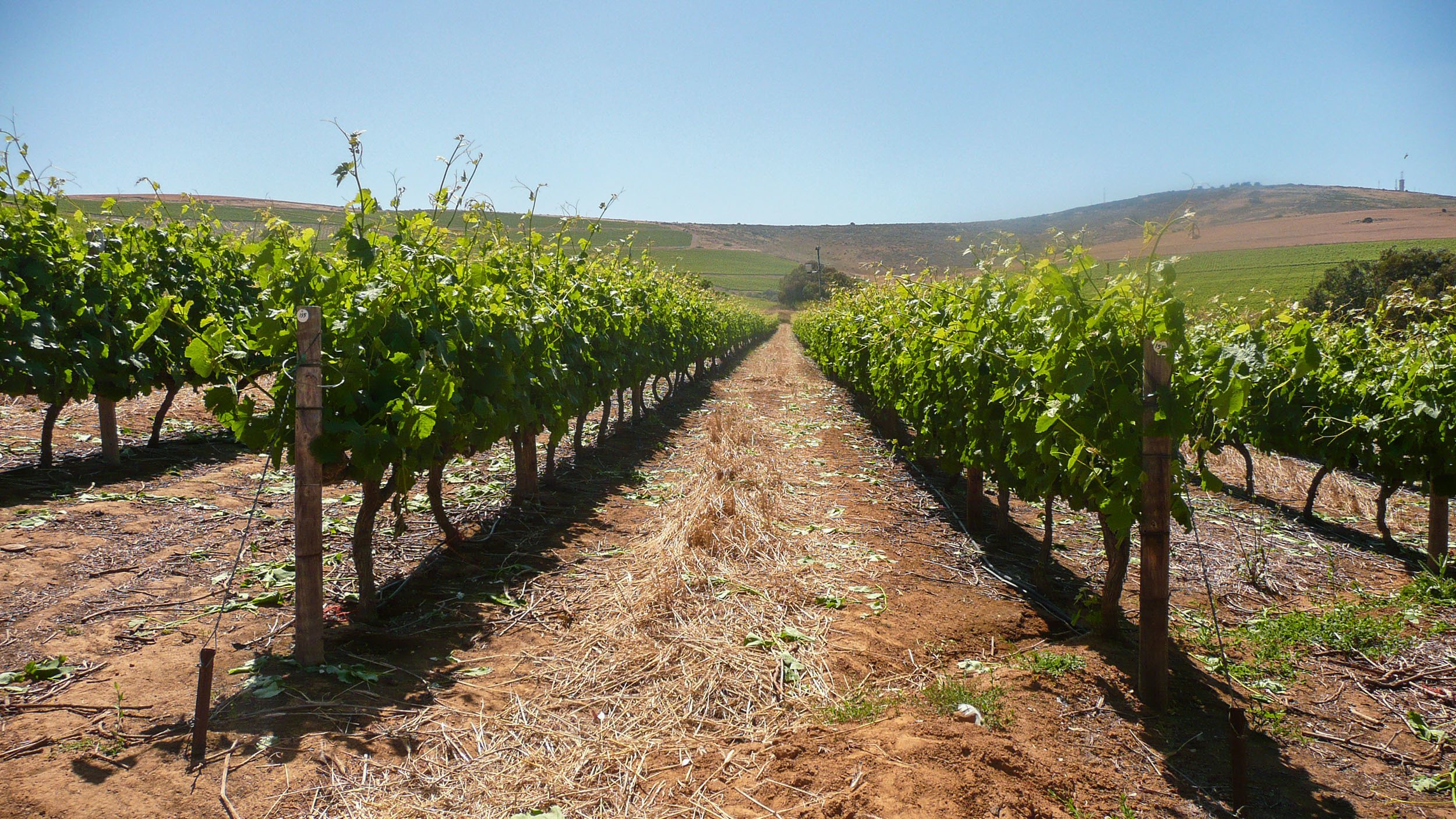
But what makes Cape wine stand out isn’t just the quality — it’s the diversity. Vineyards here are historical landmarks, boutique retreats, and culinary destinations, many of which date back to the 17th century, when the first vines were planted by Dutch and French settlers.
A visit is about understanding the history, terroir, and culture that have shaped the region’s winemaking traditions for centuries.
Best Ways to Visit the Winelands
I knew from the start that self-driving wasn’t an option — after all, what’s the point of a wine tour if you can’t fully indulge? Instead, I opted for a guided tour, which turned out to be the perfect way to experience the region.
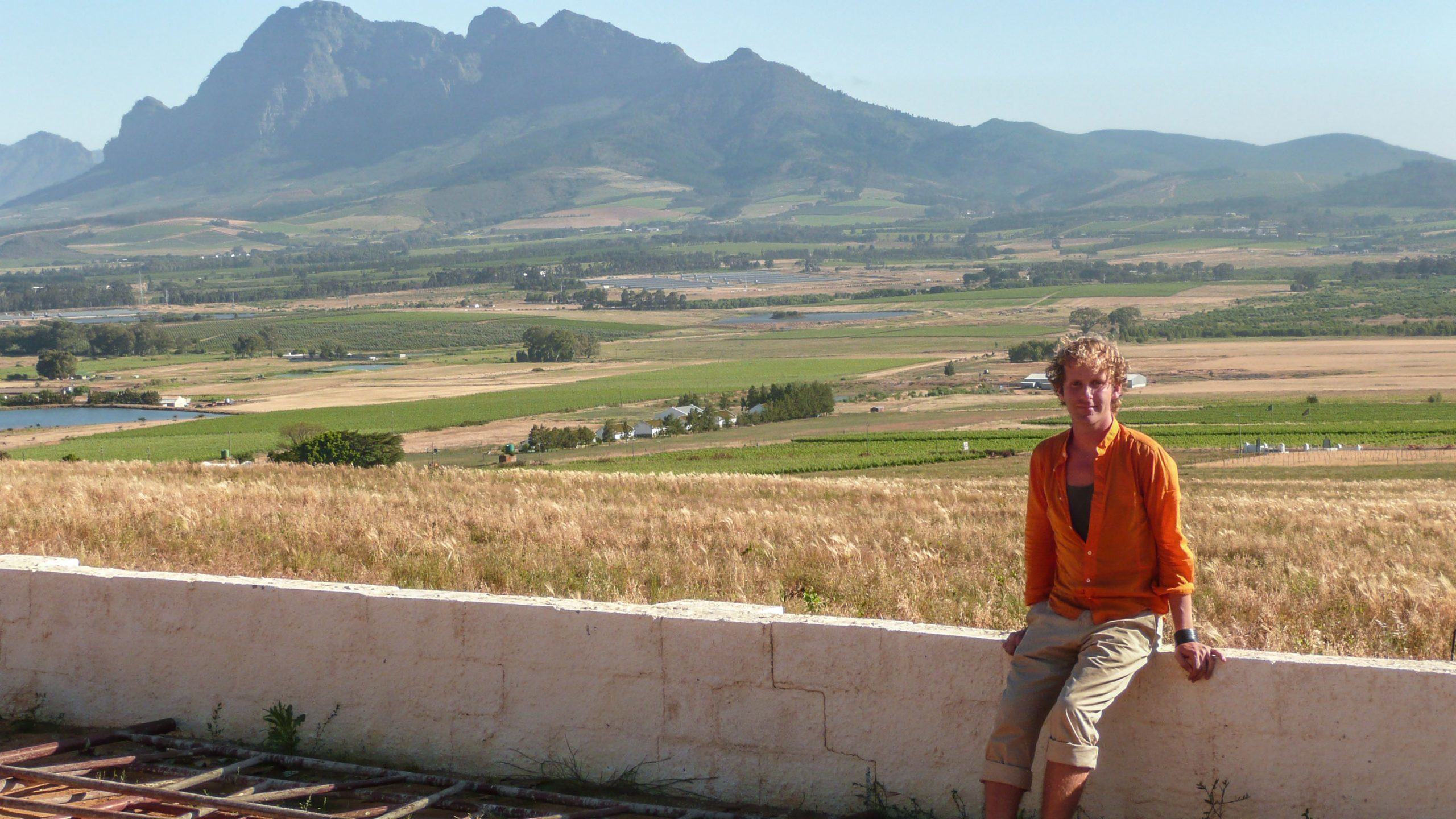
Our small group, slightly more animated with every tasting, spent the day moving between elegant wine estates, sampling vintages, and learning about the intricate process that transforms a simple grape into something extraordinary.
The tour started in Stellenbosch, included Franschhoek, and ended in Paarl — giving me a taste of multiple regions in one day.
By the end, we weren’t just mildly inebriated — we were laughing, swapping stories, and letting the passing scenery blur into a pleasant haze.
Stellenbosch vs. Franschhoek – Which Is Better?
Two names dominate conversations about the Cape Winelands (even though there are six main regions): Stellenbosch and Franschhoek. Both are stunning, both are famous, yet they offer distinctly different experiences.
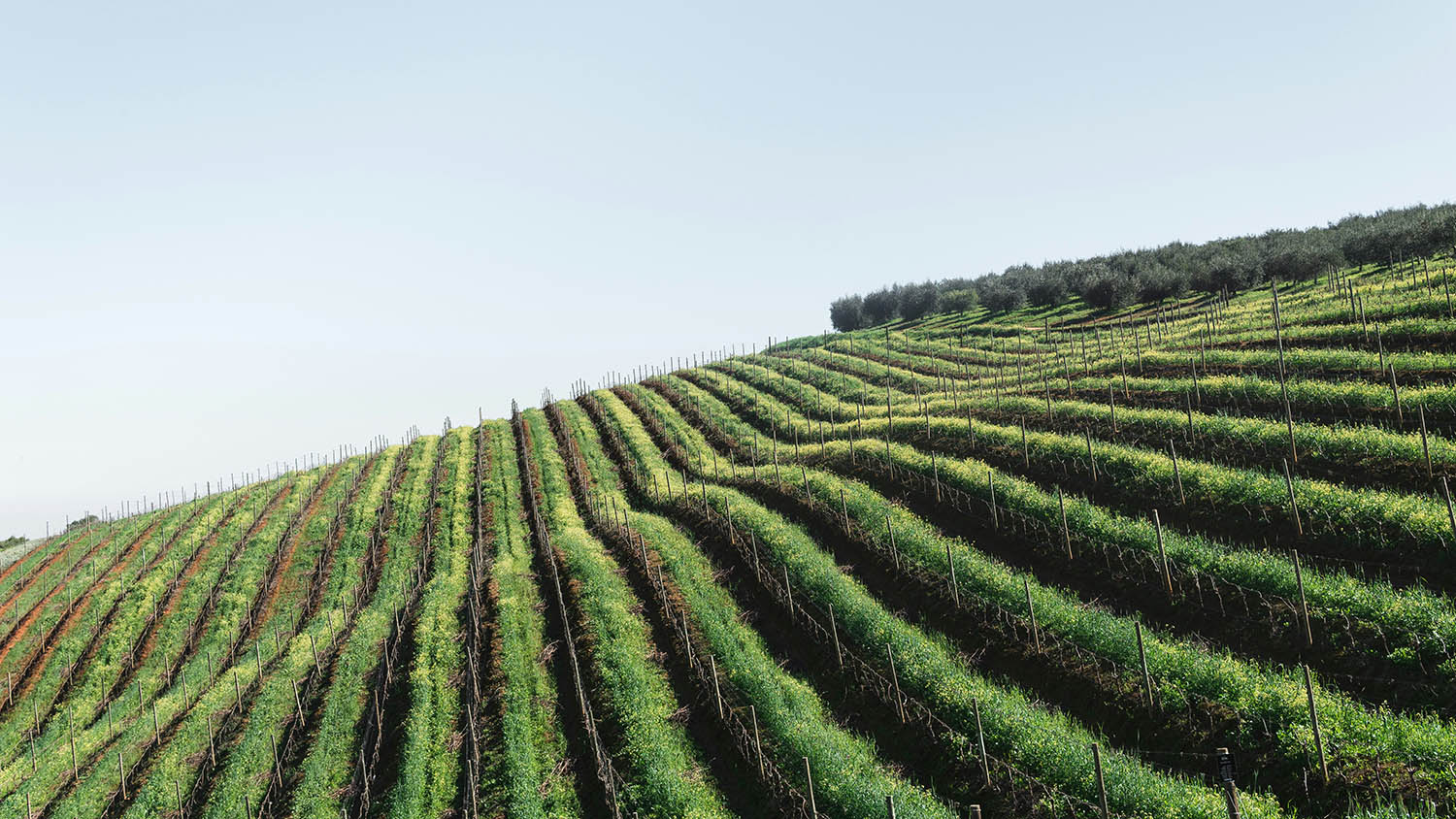
Stellenbosch, South Africa’s second-oldest town, is the intellectual and historic hub of wine country. With its Cape Dutch architecture, oak-lined streets, and prestigious university, it has an old-world charm that blends seamlessly with its high concentration of award-winning wineries.
It’s the ideal place for those who want variety, offering everything from big-name estates to boutique family-run farms, each with its own take on winemaking.
Franschhoek, by contrast, feels smaller, more intimate, and undeniably French — a legacy of the Huguenots who settled here in the 1600s. It’s known as the gourmet capital of South Africa, making it the perfect spot for those who want to pair their wine with world-class cuisine.
The Franschhoek Wine Tram, which runs through some of the region’s most beautiful vineyards, offers a unique and leisurely way to explore.
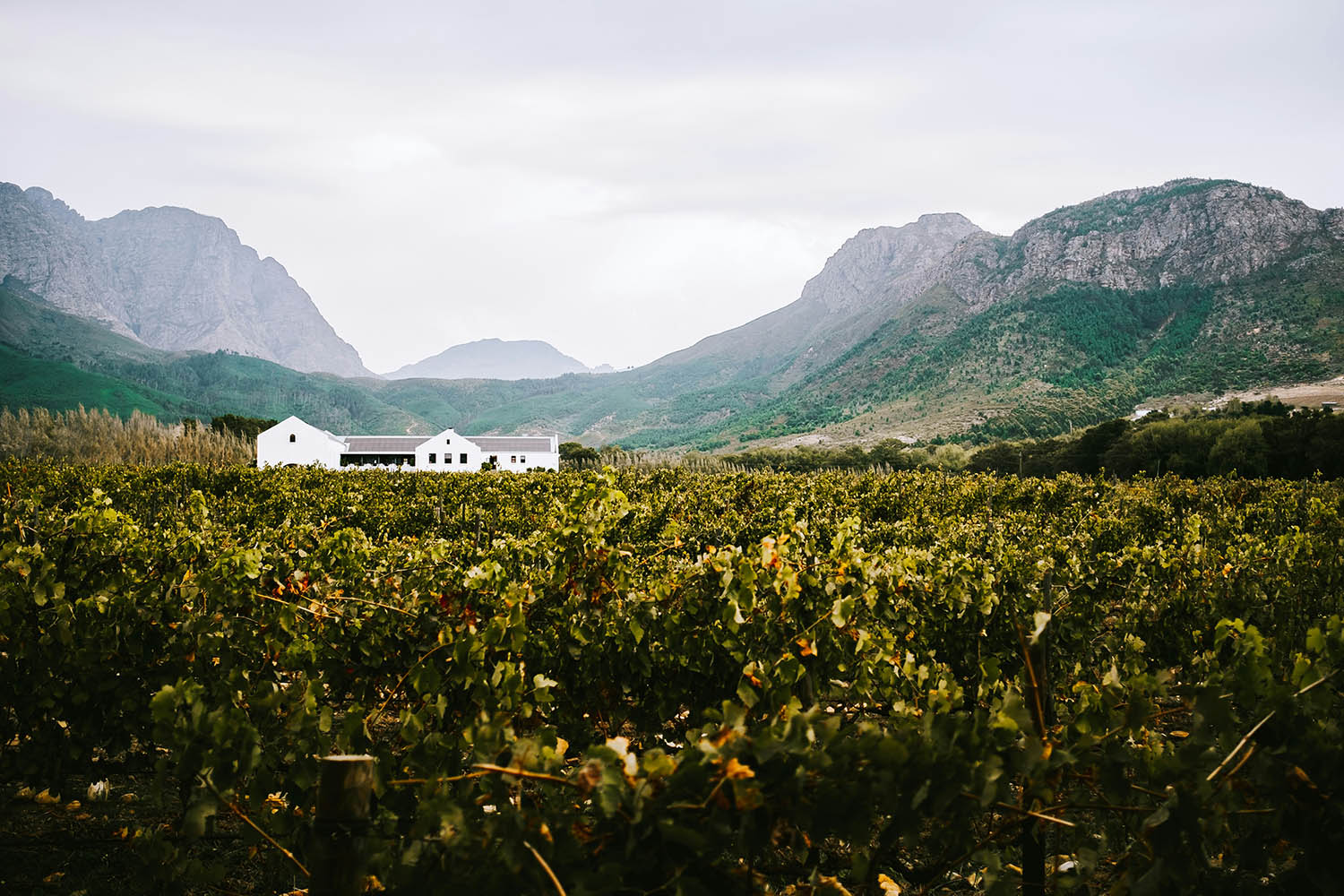
For first-time visitors, I’d say Stellenbosch is the best all-around choice, simply because of the sheer number of vineyards and variety of wines available. But for those who want a more relaxed, indulgent experience, Franschhoek — with its emphasis on fine dining and small-batch wines — might just steal your heart.
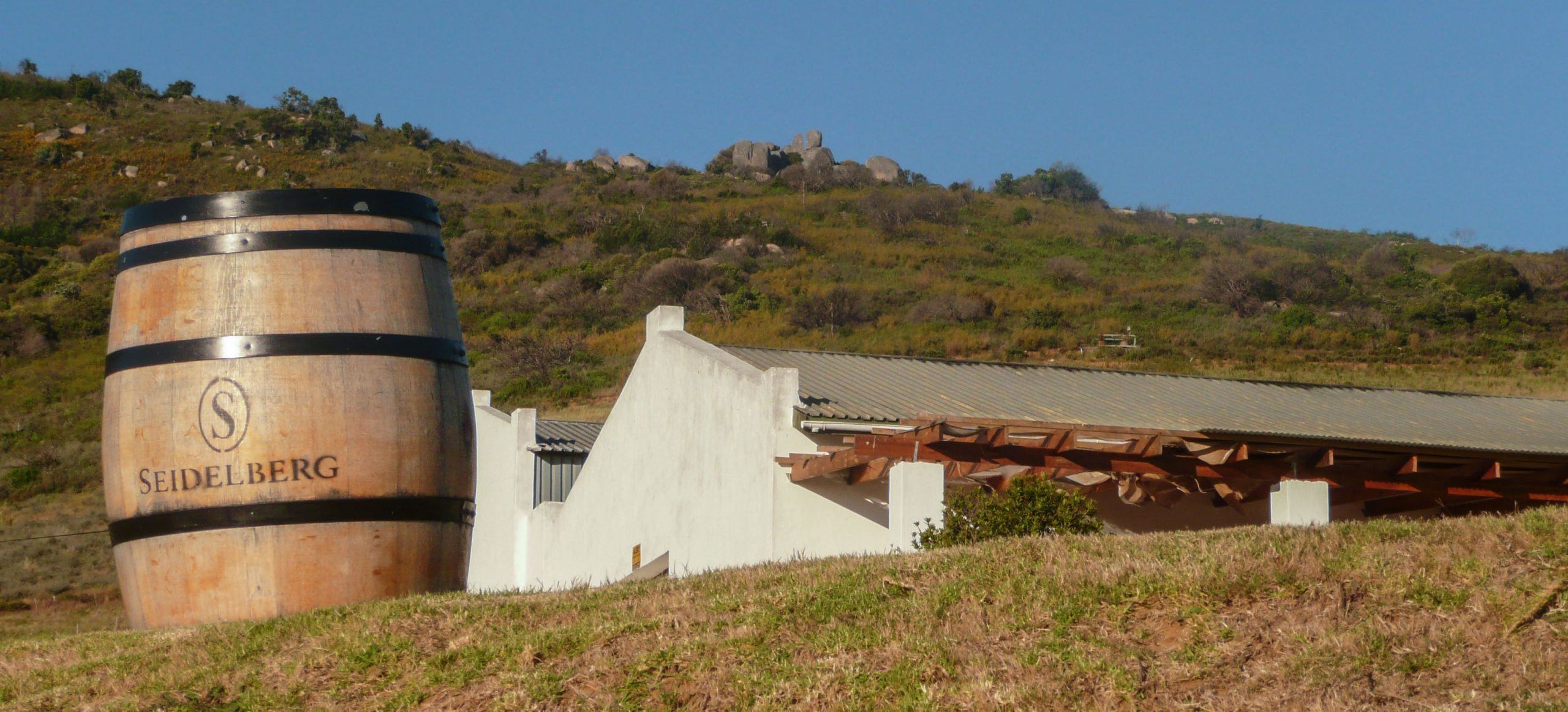
Rather than debate between Stellenbosch and Franschhoek, a third option — one I took — is to visit both (and even add Paarl, as I did). Each has a distinct character, making a multi-region tour a great way to experience the diversity of the Cape Winelands.
Wine Tours vs. Self-Drive – Pros and Cons
For me, the decision was simple — I wanted to drink without worrying about navigating unfamiliar roads, so a guided tour made the most sense. But for those weighing their options, here’s how the two compare:
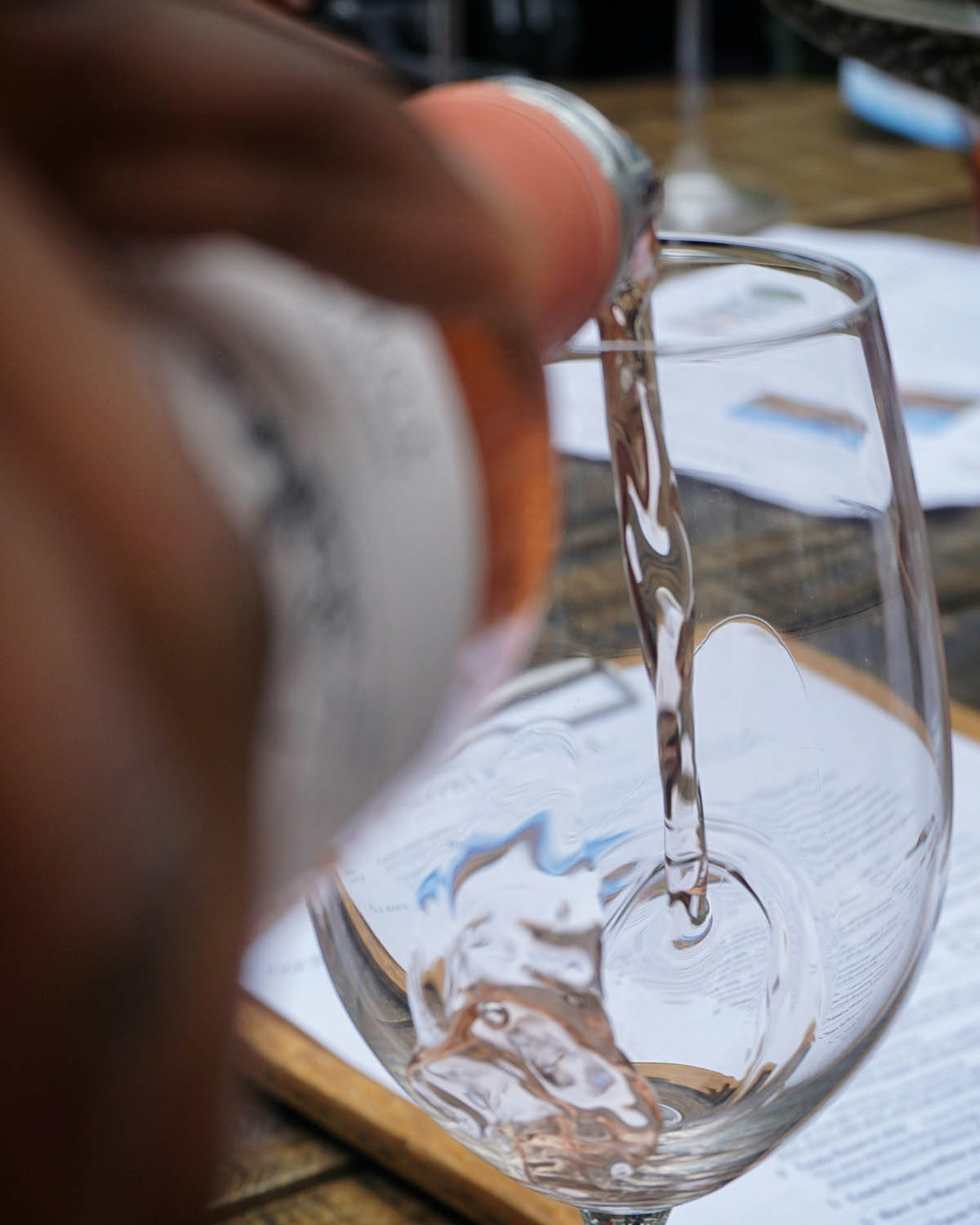
A guided wine tour is the easiest, safest, and most immersive way to experience the Winelands. You get the benefit of a knowledgeable guide, a designated driver, and pre-selected vineyards that often include special tastings or behind-the-scenes access.
Most tours cover three to five wineries, with plenty of time to savour each stop.
The downside? Less flexibility — you go where the itinerary takes you, which means you can’t linger at a place you love.
A self-drive tour, on the other hand, offers freedom and control. You can choose exactly which wineries to visit, spend as much time as you want at each, and stop off at scenic viewpoints along the way.
The downside is obvious — someone has to drive. While some estates offer spittoons for responsible tasting, let’s be honest: wine tasting is best when you don’t have to hold back.
Final Thoughts on the Cape Winelands
A visit to the Cape Winelands is about the landscapes, the history, and the slow, indulgent experience of it all. Whether you choose Stellenbosch for its variety, Franschhoek for its charm, or a mix of regions like I did — including Paarl — you’ll leave with a deeper appreciation for South African wine.
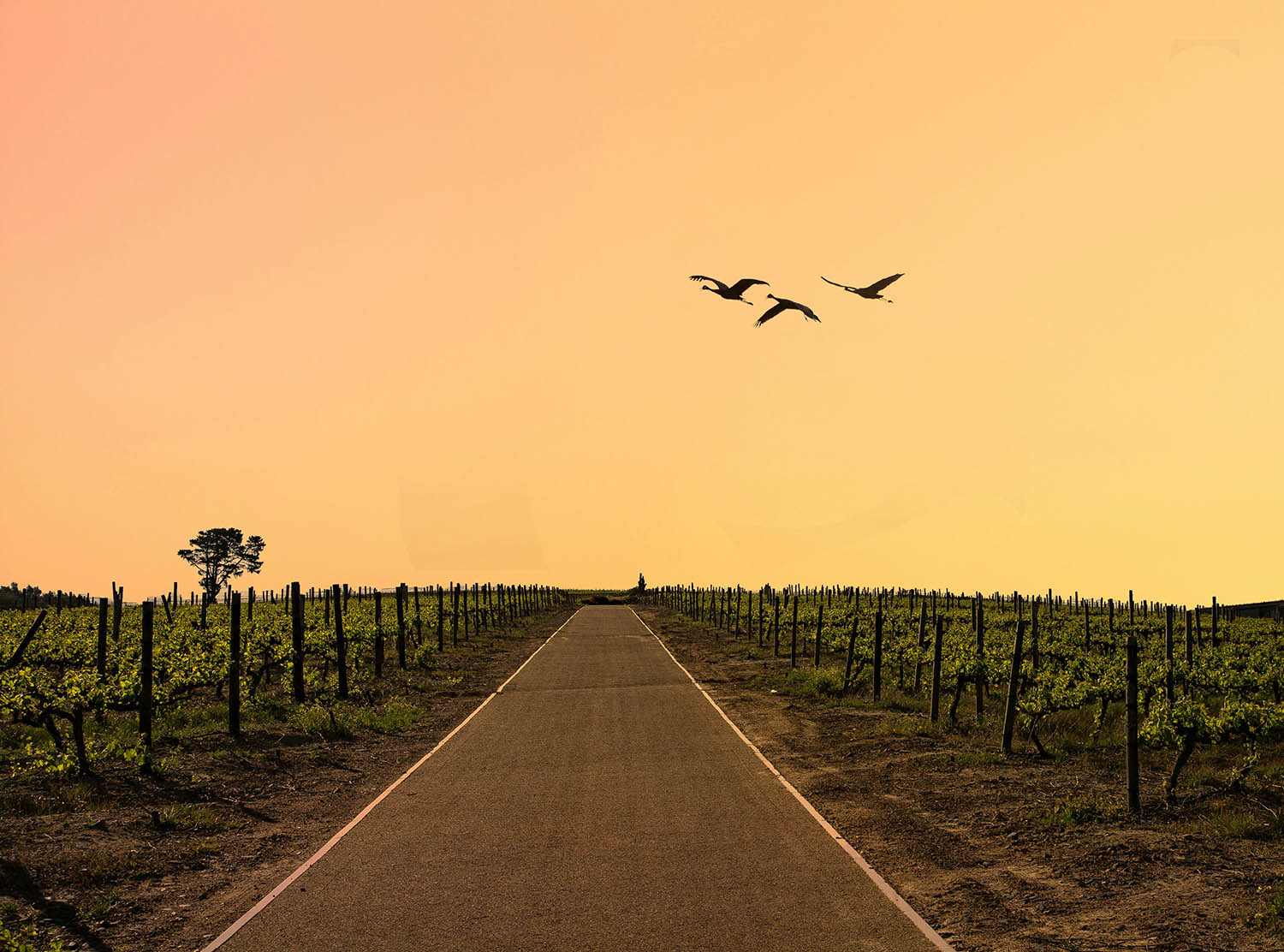
I left with a deeper appreciation for South African wine, a camera roll full of golden vineyard views, and somehow, a free bottle of white wine that I only vaguely remember winning.
Essential Travel Tips: for Your Visit to Cape Town
While Cape Town is undeniably one of the most rewarding destinations in the world, planning a trip here requires some practical considerations. From getting there to navigating the city safely, understanding the logistics, costs, and best time to visit can make all the difference in ensuring a smooth and enjoyable experience.
Based on my own time in Cape Town, here’s what you need to know.
Getting to Cape Town
Cape Town may feel far-flung, but it’s surprisingly well-connected, especially if you’re coming from major international hubs. Whether you’re flying in from overseas, arriving overland from elsewhere in South Africa, or considering alternative routes, there are multiple ways to reach the city.
▶ By Air
For most travellers, flying is the easiest and fastest way to reach Cape Town. The city is served by Cape Town International Airport (CPT), which welcomes flights from across Africa, Europe, the Middle East, and select cities in the Americas and Asia.
If you’re coming from outside Africa, you’ll likely have a layover in Johannesburg (JNB), which serves as the main international gateway to South Africa.
Domestic flights between Johannesburg and Cape Town are frequent, with multiple airlines — including South African Airways, FlySafair, and Airlink — offering direct routes that take around two hours.
From the airport, reaching the city centre is relatively simple. Taxis, rideshares like Uber and Bolt, and airport shuttle services are readily available. The MyCiTi Bus service also operates a reliable and affordable route between the airport and downtown Cape Town.
▶ By Train
Train travel in South Africa has declined significantly, but there are still a few notable options for those looking for a unique, scenic journey to Cape Town.
The Shosholoza Meyl long-distance train runs from Johannesburg to Cape Town, offering both economy class and sleeper compartments. While the train ride takes around 26 hours, it’s a far more relaxed and scenic experience than the bus — though delays can be common, and it’s not the most reliable option.
For those looking for a luxury experience, the Rovos Rail and The Blue Train offer high-end, all-inclusive train journeys between Pretoria and Cape Town. These multi-day experiences come with fine dining, five-star service, and breathtaking views of South Africa’s landscapes. They’re not cheap, but if you want to experience old-world train travel at its finest, this is one of the best ways to do it.
Most of the train network in South Africa is operated by the Passenger Rail Agency of South Africa - PRASA.
Cape Town Railway Station is located in the city centre, on the corner of Adderley and Strand Streets. All trains Cape Town-bound arrive here.
▶ By Bus
If you’re travelling overland from another South African city, long-distance buses provide a budget-friendly alternative to flying. Intercape, Greyhound, and Citiliner operate routes connecting Johannesburg, Durban, Port Elizabeth, and other major hubs to Cape Town.
Here's what they look like:
- Greyhound - "the people's choice"
- Intercape - "safe, dependable and affordable"
- Translux - bus travel in comfort
- BazBus - hop on hop off service favoured by backpackers
However, bus journeys in South Africa can be long and tiring — for example, the trip from Johannesburg to Cape Town takes around 18–20 hours, which isn’t ideal unless you’re on a tight budget or enjoy long-haul road travel.
▶ By Car (Self-Drive Road Trip)
For those who love the freedom of the open road, driving to Cape Town can be a spectacular experience — especially if you take the Garden Route, one of the most scenic road trips in the world. This stretch of coastline, running from Port Elizabeth to Cape Town, is filled with beaches, national parks, and charming towns, making it a journey worth savouring rather than rushing.
If you’re driving from Johannesburg, expect a long but manageable road trip — about 14–16 hours on the N1 highway. Rental cars are widely available in South Africa, and road conditions on major routes are generally good, but be aware of long stretches without services and the need to stay alert when driving at night due to unpredictable road conditions.
Getting around Cape Town
Once you arrive in Cape Town, navigating the city requires some planning.
Unlike some major cities where public transport is seamless, Cape Town’s infrastructure can be hit or miss, and safety is a real concern, especially when it comes to choosing the right mode of transport.
I found that while parts of the city are easy to explore, others require caution and a bit of local knowledge to move around safely and efficiently.
▶ On Foot
Walking is a great way to experience Cape Town’s vibrant neighbourhoods, scenic waterfronts, and historic districts, but it’s not always the most practical — or safest — option. Areas like the V&A Waterfront, Bo-Kaap, and the Atlantic Seaboard (Sea Point, Camps Bay, Clifton) are relatively pedestrian-friendly during the day, with plenty of cafés, shops, and attractions within walking distance.
However, Cape Town is not a walk-everywhere kind of city. The layout is spread out, and some parts of the city, particularly the CBD (Central Business District), become unsafe after dark. Walking at night, especially in deserted areas, is not recommended, as muggings and opportunistic crime are common.
I was warned by multiple locals not to wander too far from well-populated areas, and I took that advice seriously.
▶ By Metrorail
Cape Town has a public train system called Metrorail, used primarily by locals. The trains run from city centre locations to more than 80 suburban spots around Cape Town.
Safety is always a concern in South Africa, so you're best off travelling in first class on these services and keeping your belongings close to your body. Avoid flashing anything valuable. Try not to be on any train after 6pm or when it's dark.
▶ By Bus
Cape Town’s public transport system is limited yet expanding. While minibuses (shared vans/minibus taxis) operate extensively, they are informal, unregulated, and often unsafe for tourists due to reckless driving and lack of set routes. More details on their risks and how they work are covered below.
The one exception is the MyCiTi Bus, a government-run transport service that is safe, affordable, and efficient — especially for getting between the airport, the city centre, Table Mountain, and the Atlantic Seaboard.
MyCiTi Bus services are modern, well-maintained, and have security in place, making them a far better option than Cape Town’s informal minibus taxis. However, the coverage is limited, meaning you’ll still need another transport option for certain areas.
Don't forget to buy a My Citi cash card before getting on board so you can pay.
There's also Golden Arrow. It's old and slow but the connections are cheap and they connect most parts of the city. However, for the purpose of security, they are not recommended for travellers.
▶ By Taxi or Rideshare
Taxis in Cape Town are notoriously unreliable and can be overpriced, with some drivers refusing to use meters or charging high fares. Because of this, I never used a traditional taxi, and most locals advised against them unless absolutely necessary.
Metered taxis do exist, but they aren’t commonly hailed on the street — you typically need to call and book in advance. Reputable companies include Marine Taxis, Unicab, and Rikkis Taxis, with fares starting at around 10 rand per kilometre.
Instead, rideshare apps like Uber and Bolt are the best way to get around the city safely. Uber is the most widely used option, and many find it to be affordable, reliable, and much safer than hailing a random cab. Bolt is cheaper but has had some safety concerns, with reports of drivers being less vetted than on Uber.
When using rideshares, it’s best to wait indoors for your ride and double-check the license plate before getting in. Follow basic precautions, such as sharing your trip details with someone and avoid standing around alone in quiet areas waiting for a ride.
▶ By Minibus Taxis
Minibus taxis (shared minivans) are the most extensive transport system in Cape Town, but they come with risks. Like in many parts of Africa, these privately owned minivans are often overcrowded, and drivers are known for reckless driving and speeding.
Unlike formal bus routes, minibus taxis don’t have a published route map — you need to ask around to find one going in your direction. To catch one, wave your hand as it approaches, and the doorman will collect your fare while confirming your drop-off location (choose a well-known landmark).
While this can be an adventure, it’s not the safest option for visitors. If it feels unsafe, don’t get in.
Best Time to Visit Cape Town
Cape Town is a year-round destination, but the experience you’ll have depends heavily on when you visit. The city’s location at the southern tip of Africa means it has distinct seasons, each offering different advantages and drawbacks depending on what you want to do.
I visited during summer, and while the warm weather and long daylight hours were perfect for sightseeing, I quickly realised that timing matters, especially when it comes to crowds, costs, and weather conditions.
▶ Summer vs. Winter – Pros and Cons
Cape Town’s summer (December to February) is peak tourist season, drawing beachgoers, hikers, and festival lovers. The weather is warm and dry, with temperatures averaging 25-30°C (77-86°F), making it the best time for outdoor activities, wine tours, and coastal drives.
However, the downside is that prices skyrocket, attractions are packed, and accommodation needs to be booked in advance.
On the other hand, winter (June to August) brings cooler temperatures, fewer crowds, and lower prices, but it’s also Cape Town’s rainy season. Expect temperatures around 10-18°C (50-64°F) and occasional stormy weather, which can disrupt hiking and beach plans.
However, winter is the best time for whale watching, as southern right whales migrate along the coast. I’d recommend this season for budget travellers or those looking for a quieter experience.
For those who want a balance between good weather and fewer crowds, shoulder seasons — spring (September to November) and autumn/fall (March to May) — are ideal. These months offer pleasant temperatures, manageable tourist numbers, and great conditions for outdoor adventures.
▶ Best Months for Wildlife, Hiking & Beach Activities
If you’re visiting Cape Town for a specific experience, choosing the right month makes all the difference.
- Beach & Summer Activities (December – March): This is the best time for sunbathing, swimming, and outdoor dining, as Cape Town’s beaches come alive. However, beware of the strong winds, especially in December and January, when the Cape Doctor (the city’s famous summer wind) makes an appearance.
- Hiking & Outdoor Adventures (September – April): Cape Town’s hiking season runs mostly during the warmer months, with Table Mountain, Lion’s Head, and Cape Point offering the best conditions from late spring to early autumn. During winter, trails can be wet and slippery, making hikes more challenging.
- Wildlife & Whale Watching (June – November): The best months for spotting southern right whales are July to September, as they migrate along the coast. For safari lovers, this period is also prime game-viewing season in reserves outside the city.
▶ Final Thoughts on When to Visit Cape Town
Choosing the best time to visit Cape Town depends on your priorities.
If you want perfect weather and lively energy, visit during summer — but be prepared for higher prices and crowds.
If you’re looking for a relaxed experience with better deals, spring and autumn offer a great balance. And if your main goal is whale watching or avoiding the tourist rush, winter is your best bet.
No matter when you go, Cape Town’s beauty is undeniable — you just need to time it right for the experience you want.
Where to Stay in Cape Town
From budget-friendly hostels to luxury hotels with ocean views, Cape Town has accommodation options for every traveller and budget.
Budget: 91 Loop Boutique Hostel
For a budget-friendly stay in the heart of Cape Town, 91 Loop Boutique Hostel offers sleek dorms, private rooms, and air-conditioned sleeping pods just minutes from Long Street. With free WiFi, a trendy bar-restaurant, and organised activities like walking tours, it’s a great social hub for solo travellers.
Plus, comfy beds, lockable storage, and a superb location (rated 9.2 by solo travellers!) make it an easy pick.
Mid-Range: Neighbourgood East City
For a stylish yet affordable stay in central Cape Town, Neighbourgood East City offers modern, air-conditioned rooms with city views, a shared lounge, and a communal kitchen. It’s a short ride from V&A Waterfront and Table Mountain, with free WiFi and breakfast options to start your day right.
Solo travellers love the location (rated 8.6), making it a great base for exploring.
High End: Pepperclub Hotel
For a five-star stay in the heart of Cape Town, Pepperclub Hotel delivers luxury, comfort, and exclusivity. With extra-length king beds, a rooftop pool, a private cinema, and a wellness center, it’s designed for a premium experience.
Get exclusive access to a private beach club in Camps Bay, with a complimentary shuttle to the coast and V&A Waterfront.
Staying Safe in Cape Town – Dangers and Annoyances
Cape Town is one of the most spectacular cities in the world, but it’s also one where safety needs to be taken seriously.
South Africa has a high crime rate, and while most visitors have a trouble-free experience, being aware and prepared can make all the difference. I was cautious but never paranoid, and by following local advice and common sense, I was able to explore without major issues.
Here’s what you need to know about potential dangers and annoyances in Cape Town.
▶ Crime – What to Watch Out For
Crime in Cape Town can be opportunistic or violent, and while tourist areas are generally safe during the day, crime does happen — particularly in quiet streets, at night, or in less secure areas. The most common risks include:
- Muggings & Pickpocketing: These are frequent in isolated areas, city parks, and quieter streets, especially after dark. Tourists are often targeted for phones, cameras, and wallets, so avoid flashing valuables and keep belongings secure (or leave them in a safe at your accommodation if you absolutely don’t need to take them).
- Carjackings & Smash-and-Grabs: If you rent a car, be cautious when driving or stopped at traffic lights. Keep doors locked, windows up, and valuables out of sight — smash-and-grabs are common at intersections.
- Scams & Tourist Targeting: Some locals prey on tourists with fake guides, overpriced taxis, or distraction scams. If someone offers unsolicited help or a “special deal,” be sceptical.
I was constantly reminded by locals to avoid walking alone at night — even in areas that seemed safe during the day.
Instead, use Uber for evening transport and always check that surroundings are secure before pulling out a phone or camera.
▶ Unsafe Areas – Where to Avoid
While Cape Town has some fantastic neighbourhoods, others should be approached with caution. Areas like Nyanga, Philippi, and parts of the Cape Flats have very high crime rates and are not safe for tourists. Even within the city centre, some places feel fine during the day but become risky at night.
If you want to visit townships, go with a reputable tour rather than alone. Some townships have vibrant communities and cultural experiences, but they also have extreme poverty and crime, so local knowledge is essential.
▶ Wildlife & Natural Hazards
Beyond human dangers, Cape Town has natural risks that shouldn’t be ignored:
- Hiking Risks: Table Mountain and Lion’s Head are stunning, but hikers have been attacked, robbed, or injured on trails. Always hike in groups, avoid going at sunrise or sunset alone, and stick to well-trafficked paths. The weather can also change fast, leading to sudden fog or strong winds, so check conditions before heading out.
- Strong Ocean Currents: Cape Town’s waters can be deceptively dangerous — many beaches have strong rip currents, and drownings do occur. Only swim at lifeguarded beaches and respect warning flags.
- Baboons & Wildlife: While they may look cute, baboons can be aggressive, especially if they smell food. Never feed them and keep a safe distance if you encounter them at Cape Point or hiking trails.
▶ Load Shedding – Power Outages
One of the most frustrating parts of daily life in Cape Town is load shedding — planned power outages that happen due to South Africa’s electricity crisis. Depending on the schedule, entire neighbourhoods can lose power for several hours a day, affecting restaurants, traffic lights, and even ATMs.
Many hotels and major businesses have backup generators, but smaller places may not.
I quickly learned to check the load-shedding schedule (using apps like EskomSePush) so I could plan meals and activities around power cuts.
If you need to work online or charge devices, stay somewhere with a generator or portable power source.
▶ Final Thoughts on Safety in Cape Town
Cape Town is not a place where you can let your guard down entirely, but that doesn’t mean you shouldn’t go. With basic precautions — staying in safe areas, using Uber at night, avoiding empty streets, and being aware of local risks — it’s possible to have an amazing trip without incident.
I found that most locals were friendly and willing to give safety advice, and once I got used to being alert, I was able to relax and enjoy everything Cape Town has to offer.
Managing Your Health in Cape Town and South Africa
Staying healthy while travelling is always a priority, but in Cape Town and South Africa, there are a few specific health concerns to be aware of.
From medical facilities to water safety, food hygiene, and required vaccinations, being prepared can help prevent unnecessary risks and ensure a smooth trip. I didn’t have any major health issues during my stay, but I made sure to take precautions, especially as a nurse, when it came to drinking water, food safety, and emergency medical care.
▶ Healthcare and Medical Facilities
South Africa has some of the best private medical facilities in Africa, and Cape Town, in particular, has world-class hospitals and clinics. If you need medical care, aim for a private hospital, as public hospitals are often overcrowded and underfunded.
Some of the best private hospitals include:
- Christiaan Barnard Memorial Hospital – One of the top hospitals in Cape Town, located in the city centre.
- Mediclinic Cape Town – A highly regarded private hospital with good emergency services.
- UCT Private Academic Hospital – Affiliated with the University of Cape Town, offering high-quality medical care.
If you need a doctor or travel clinic, many private clinics cater to tourists, offering services such as urgent care, vaccinations, and routine check-ups. It’s always a good idea to have comprehensive travel insurance that covers medical emergencies, hospitalisation, and evacuation if necessary.
▶ Vaccinations and Disease Risks
Before travelling to Cape Town, it’s important to check if you need any vaccinations. The following are recommended for South Africa:
- Hepatitis A & B – Transmitted through contaminated food, water, or bodily fluids.
- Typhoid – A precaution for those eating a lot of street food or visiting rural areas.
- Tetanus & Diphtheria – Routine vaccination with boosters available.
- Rabies – Necessary if you plan to work with animals or visit remote areas.
Unlike some other parts of South Africa, Cape Town is not a malaria risk zone.
▶ Food and Water Safety
Food hygiene standards in Cape Town are generally good, especially in restaurants, cafés, and hotels. I ate at a mix of sit-down restaurants, markets, and casual eateries, and I never had issues with food poisoning. That said, it’s still best to:
- Eat at busy places where food turnover is high.
- Avoid undercooked meats or seafood in places that don’t look hygienic.
- Wash fruits and vegetables thoroughly if buying from markets.
As for tap water, Cape Town’s supply is officially safe to drink, but due to ongoing drought issues and water treatment concerns, some visitors prefer bottled or filtered water. I stuck to bottled water as I have a sensitive stomach – it gave me peace of mind.
▶ Emergency Contacts and Pharmacies
Pharmacies (called "chemists" in South Africa) are widely available, with chains like Clicks and Dis-Chem offering prescription and over-the-counter medications. If you take specific medications, bring enough for your trip, along with a copy of your prescription in case you need a refill.
For emergency medical assistance, here are some key numbers to save:
- National Emergency Number (Ambulance & Medical Emergencies): 10177
- General Emergency Services (Police & Fire): 112 (works on mobile phones even without airtime)
- Private Ambulance Services: Netcare 911 – 082 911 | ER24 – 084 124
Travelling Solo in Cape Town
Cape Town was the final stop on my Cairo-to-Cape Town overland journey, a trip I did entirely alone. While some places along the way were challenging as a solo traveller, Cape Town wasn’t one of them.
In fact, it turned out to be one of the easiest solo travel experiences of the entire trip — with the right balance of independence, safety awareness, and plenty of things to do alone without feeling out of place.
▶ Is Cape Town Safe for Solo Travellers?
Safety is always a concern when travelling alone, and South Africa has a reputation that makes many people hesitant. But my experience was that Cape Town is manageable for solo travellers, as long as you take basic precautions.
I walked around confidently in the daytime, stuck to safe neighbourhoods, and used Uber instead of walking at night.
While I never felt directly unsafe, I was more alert than in some other cities, and I always followed local advice on which areas to avoid. The key to solo safety in Cape Town is being street-smart — not wandering into isolated areas, not displaying valuables, and not assuming that every part of the city is safe just because it looks nice.
▶ Best Things to Do Solo in Cape Town
One of the reasons Cape Town works so well for solo travellers is that there’s plenty to do alone — whether you’re into hiking, history, food, or photography.
- Hiking Table Mountain or Lion’s Head – Hiking alone is not recommended for safety reasons, but if you join a morning group hike, it’s one of the most rewarding solo experiences in the city.
- Exploring Bo-Kaap – The colourful streets, historic homes, and spice shops of Bo-Kaap are perfect for a solo wander, and it’s a great area for photography.
- Visiting Robben Island – The ferry ride and guided tour of Nelson Mandela’s prison island are structured experiences, so you don’t need company to feel engaged.
- Relaxing at the Beach – Beaches like Camps Bay, Clifton, and Muizenberg are popular and well-frequented, making them safe for solo travellers who just want to soak up the sun.
- Wine Tasting in Stellenbosch or Franschhoek – I wasn’t sure if wine tours would be good solo, but they turned out to be one of the easiest ways to meet people. The group atmosphere made it feel natural to chat with others.
▶ Solo Travel Challenges in Cape Town
While solo travel in Cape Town was mostly easy, there were a few challenges:
- Some areas feel unsafe alone, especially after dark. Walking solo at night isn’t a good idea, so Uber is essential for getting around after sunset.
- Social settings can be hit or miss. While tours and group activities made it easy to meet people, some nightlife spots felt a bit cliquish, with groups sticking to themselves.
- Public transport isn’t always great for solo travellers. Since Cape Town’s minibus taxis aren’t recommended for tourists, and the MyCiTi Bus has limited routes, solo travellers end up relying a lot on Uber, which can add up.
▶ Final Thoughts on Solo Travel in Cape Town
Finishing my overland trip in Cape Town alone turned out to be the perfect ending. The city offers plenty of solo-friendly activities, beautiful places to explore, and a good balance of independence and opportunities to meet people.
While it’s not a destination where you can be careless about safety, it’s absolutely possible to travel solo here and have an incredible experience — just with a bit more awareness than in some other places.
FAQs About Visiting Cape Town
Even after researching Cape Town, I had plenty of questions before I arrived. Here are some of the most common questions travellers ask, along with quick, no-nonsense answers based on my experience.
Is Cape Town Expensive?
It depends.
Compared to Europe or the U.S., Cape Town can be very affordable, especially for food, transport, and activities. However, accommodation and tours (especially safaris and wine tastings) can be pricey.
The local currency is the South African Rand (ZAR), and the exchange rate favours many foreign currencies, but prices fluctuate.
Budget travellers can get by on $40–60 per day, while mid-range travellers should expect $80–150 per day.
How Many Days Do You Need in Cape Town?
At least 4–5 days, but a week is better. Cape Town has a lot to see, and rushing through Table Mountain, Cape Point, the Winelands, and the city’s cultural spots in just a couple of days won’t do it justice.
If you can, plan for 5 days to enjoy the highlights without feeling rushed.
Do You Need a Visa to Visit South Africa?
It depends on your nationality. Many travellers, including those from the U.S., UK, Canada, Australia, and most of Europe, can enter visa-free for up to 90 days. Others need to apply in advance.
Always check the official government website before traveling.
Can You Drink Tap Water in Cape Town?
Yes, tap water in Cape Town is officially safe to drink.
But due to water shortages and occasional infrastructure issues, some travellers prefer to drink bottled or filtered water.
Is It Easy to Meet People in Cape Town?
Yes, if you join tours, hikes, or social events. The city has a mix of locals, expats, and travellers, and backpackers, wine tours, and group hikes are good ways to connect.
The nightlife can be cliquish, but bars, hostels, and Airbnb Experiences are good for meeting people.
Save this article for future reference!
Final Thoughts: Is Cape Town Worth Your Time & Money?
After months of travelling solo across Africa, I reached Cape Town — the final stop on an overland journey that had taken me through savannas, jungles, and bustling cities. I wasn’t sure if it would live up to the adventure that came before it, but by the time I left, there was no doubt — Cape Town is absolutely worth visiting.
The city offers breathtaking landscapes, rich history, and a mix of cultures that make it unlike anywhere else. From hiking Table Mountain to exploring the colourful streets of Bo-Kaap, learning the sobering history of Robben Island, and sipping world-class wine in Stellenbosch, Cape Town delivers an experience that is both deeply immersive and visually unforgettable.
That said, it’s not a flawless destination. Crime is a concern, and it’s not a place where you can be careless with safety. But with basic precautions, most visitors have a smooth and trouble-free trip.
For anyone who loves adventure, culture, nature, and food, Cape Town isn’t just worth visiting — it’s a place that stays with you long after you leave.
If you’re considering it, go. You won’t regret it.
